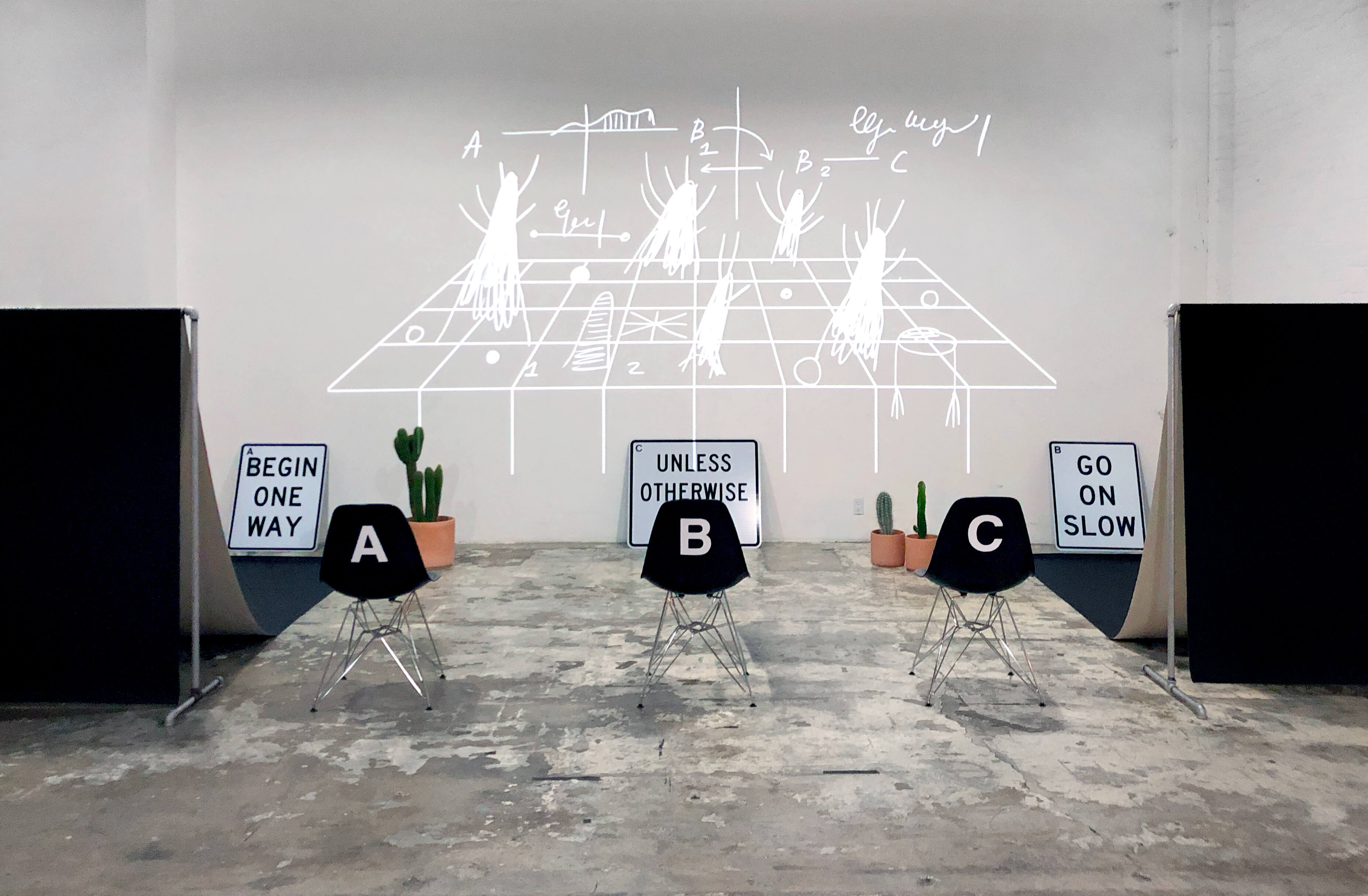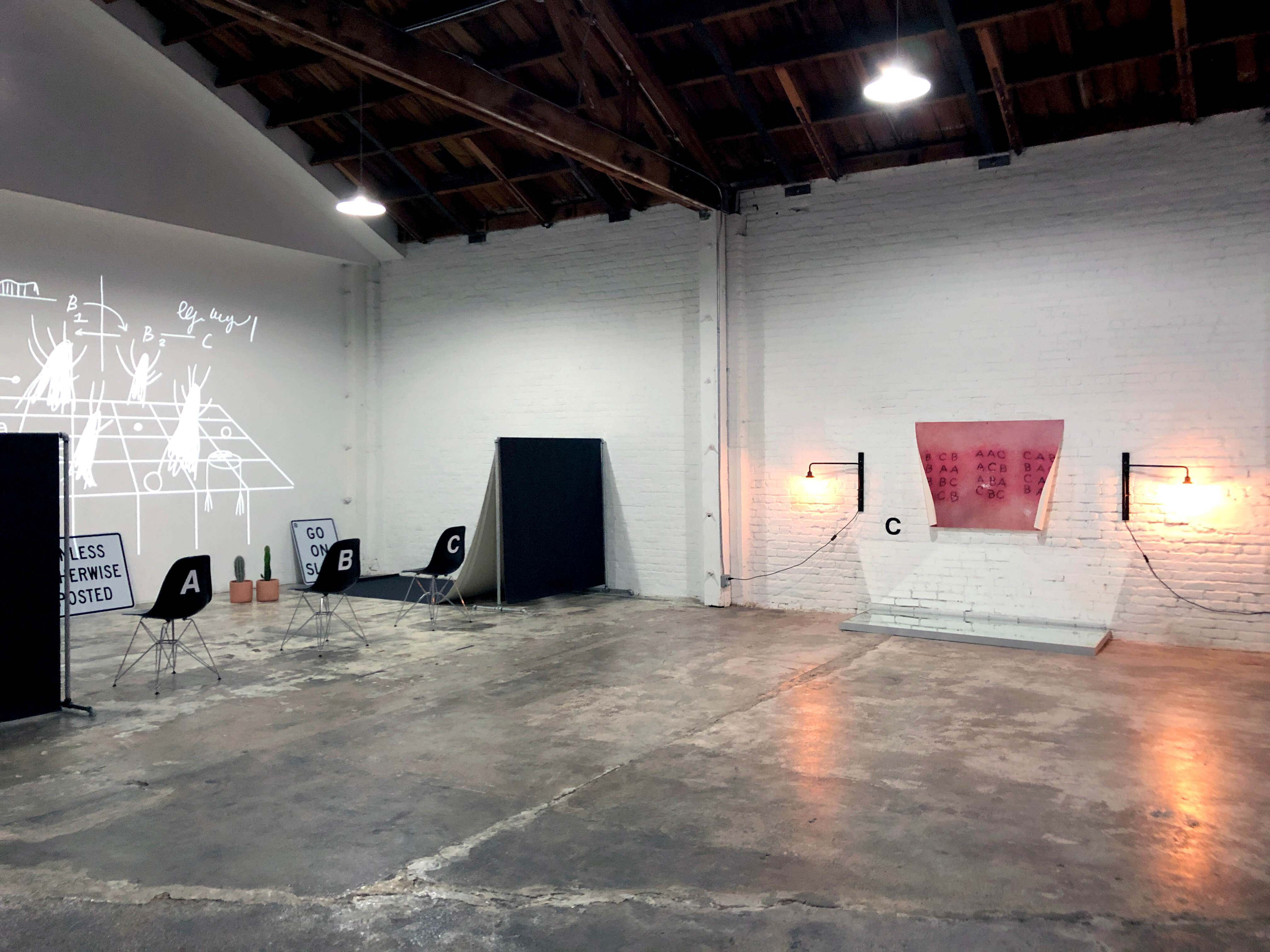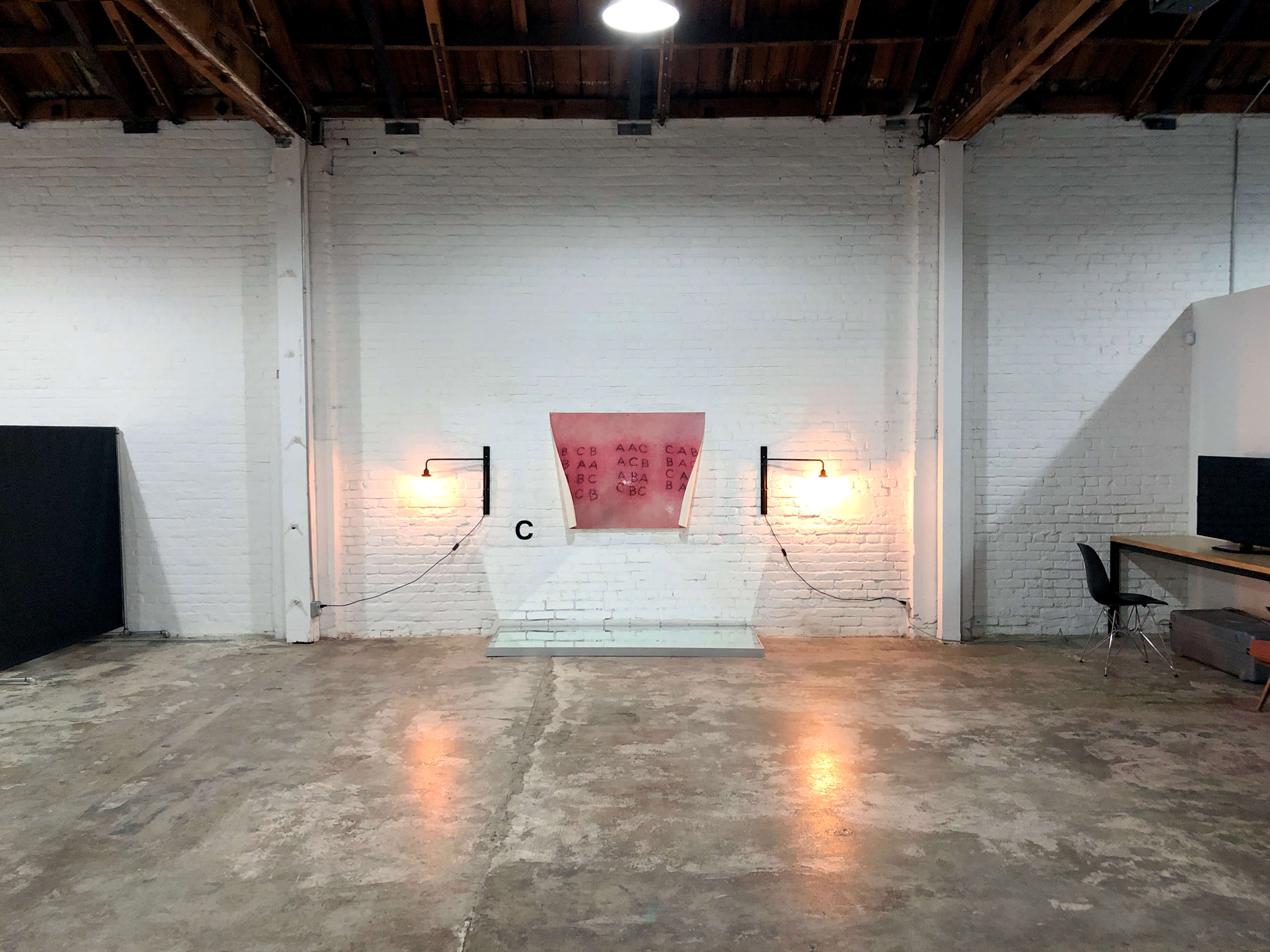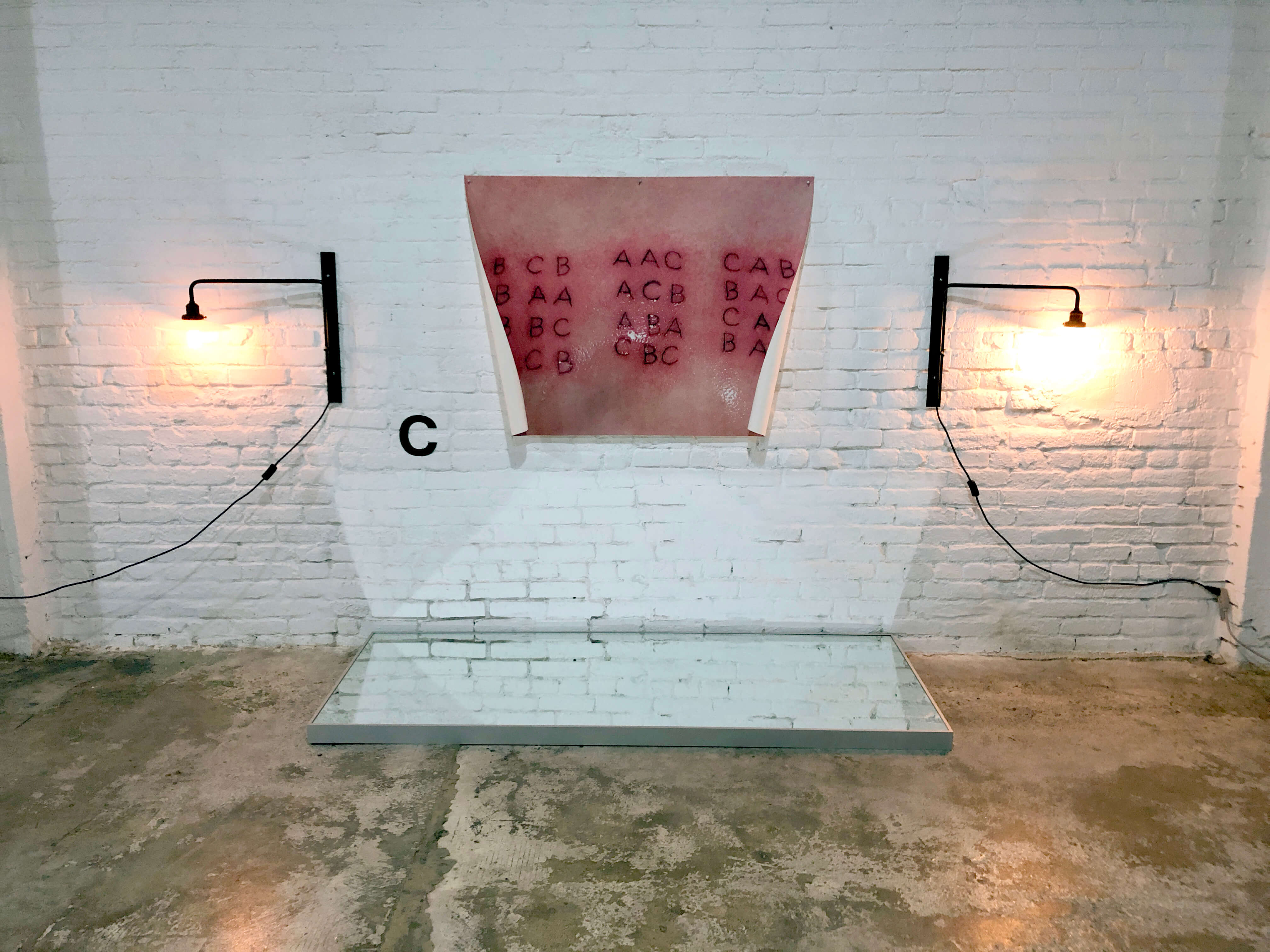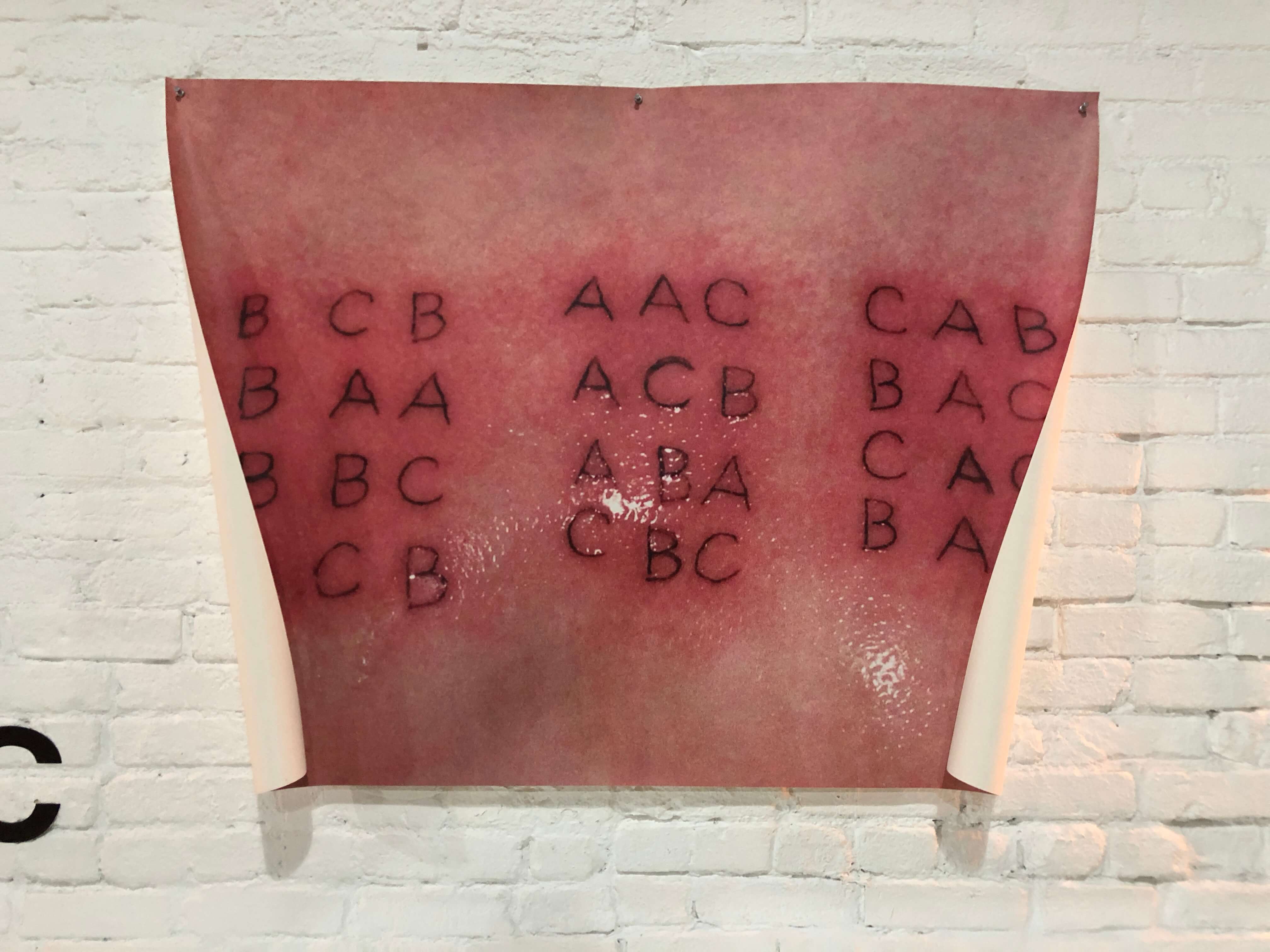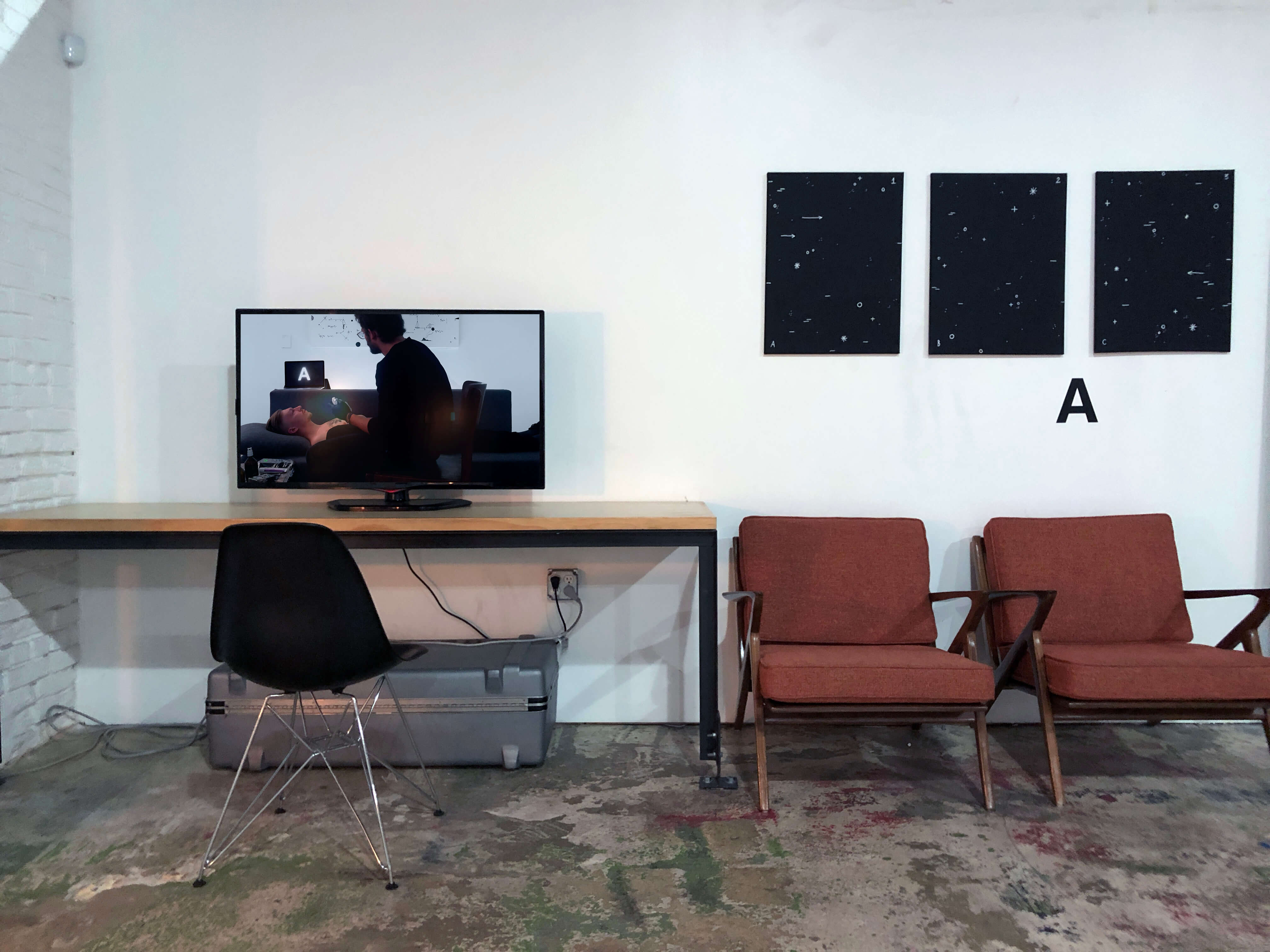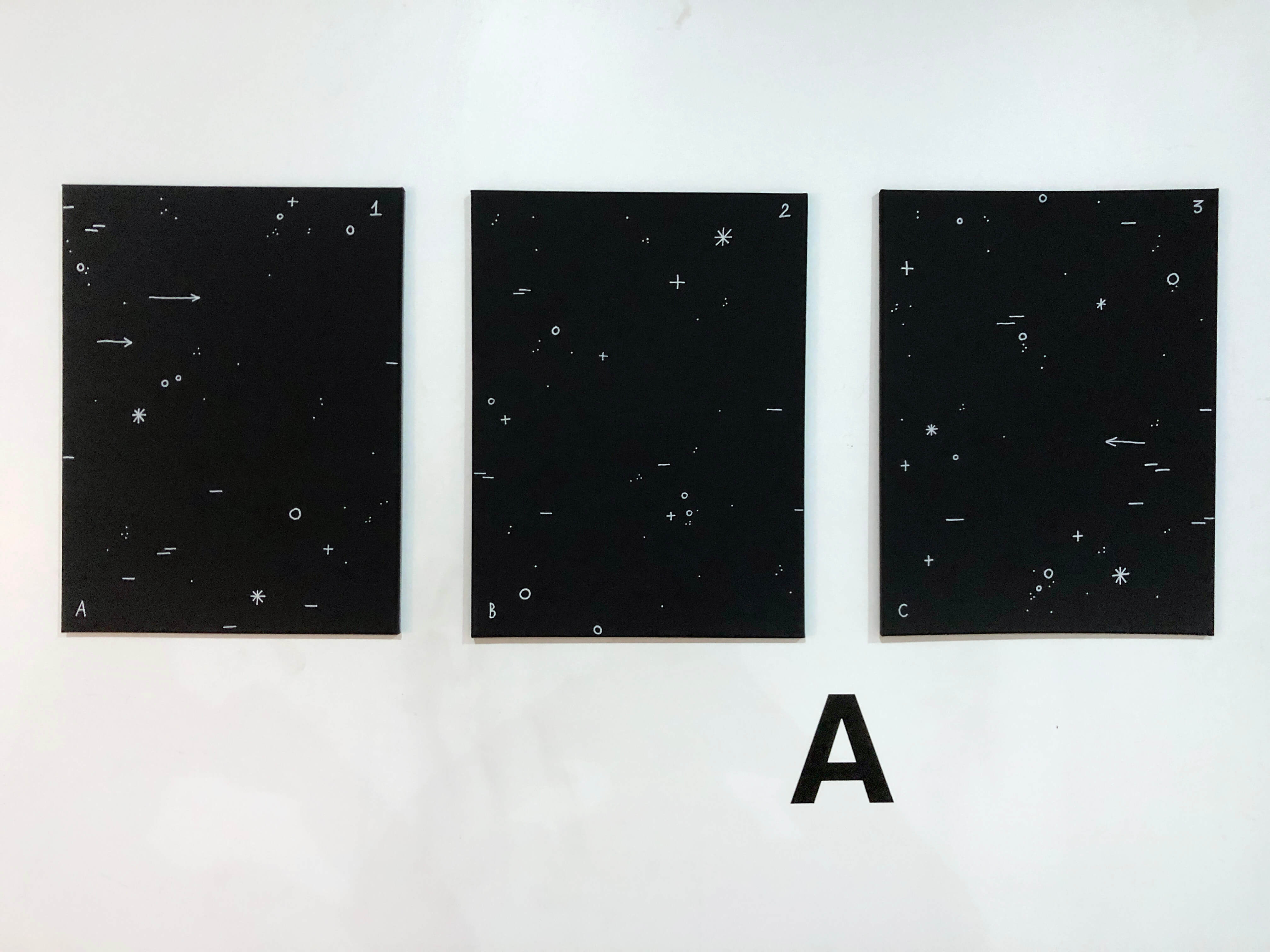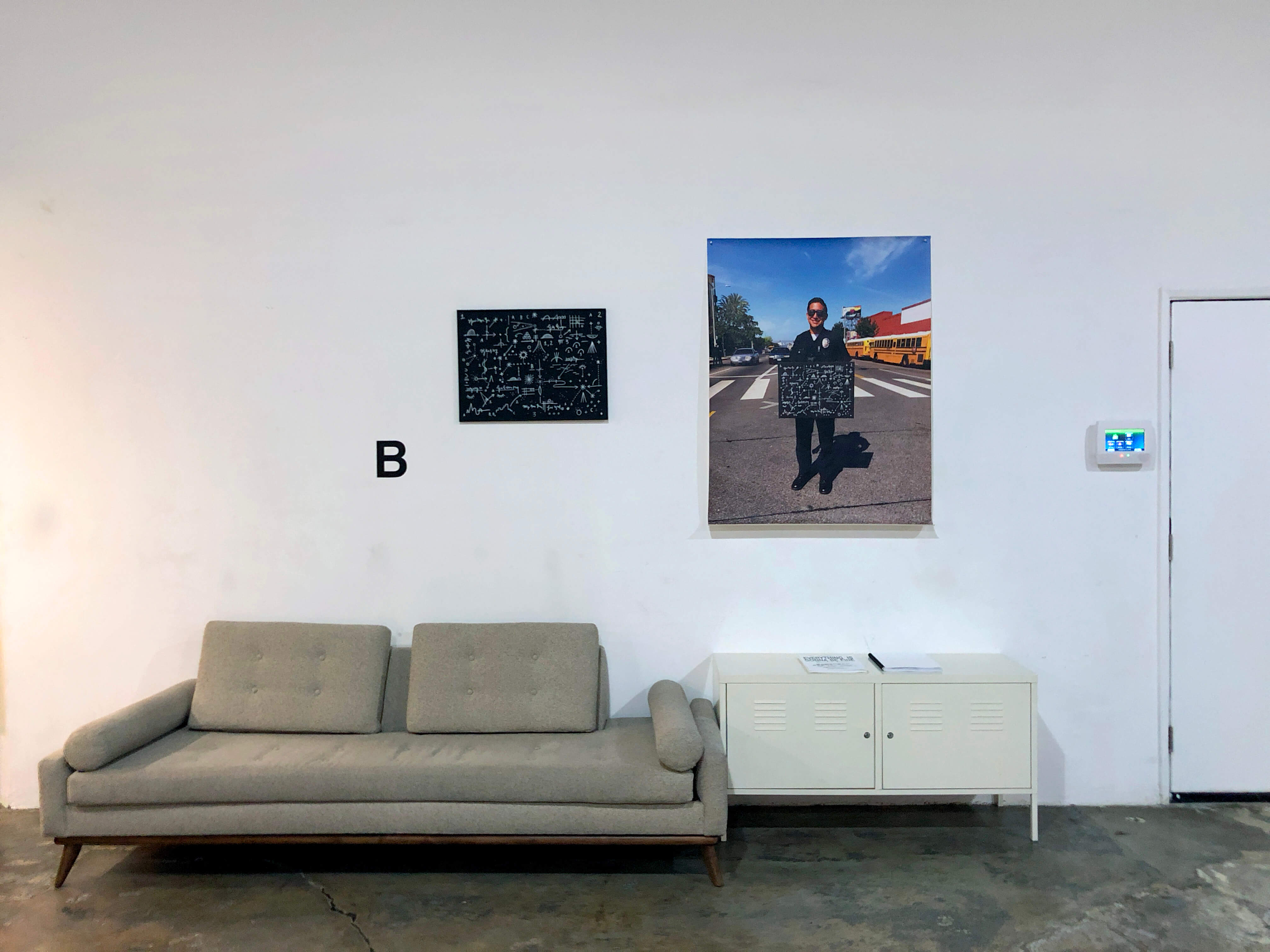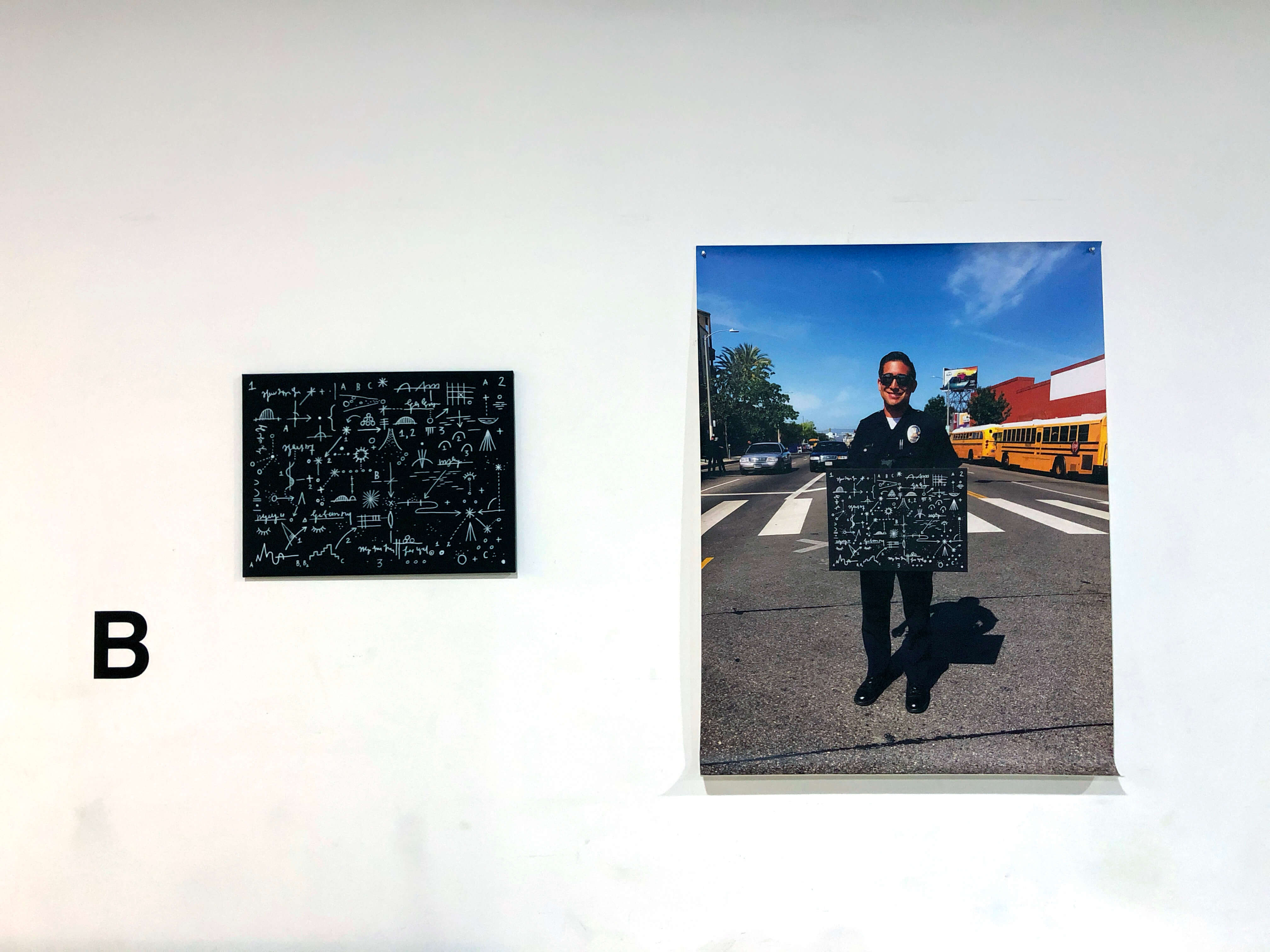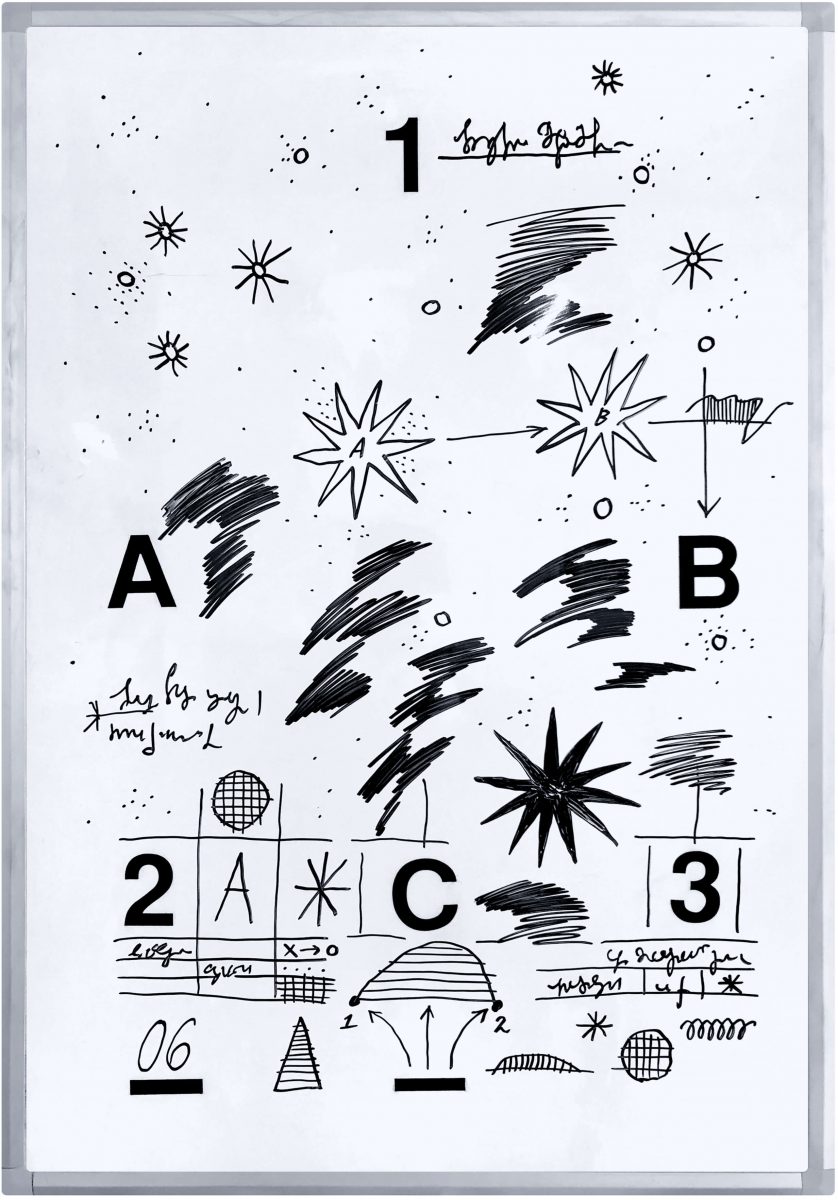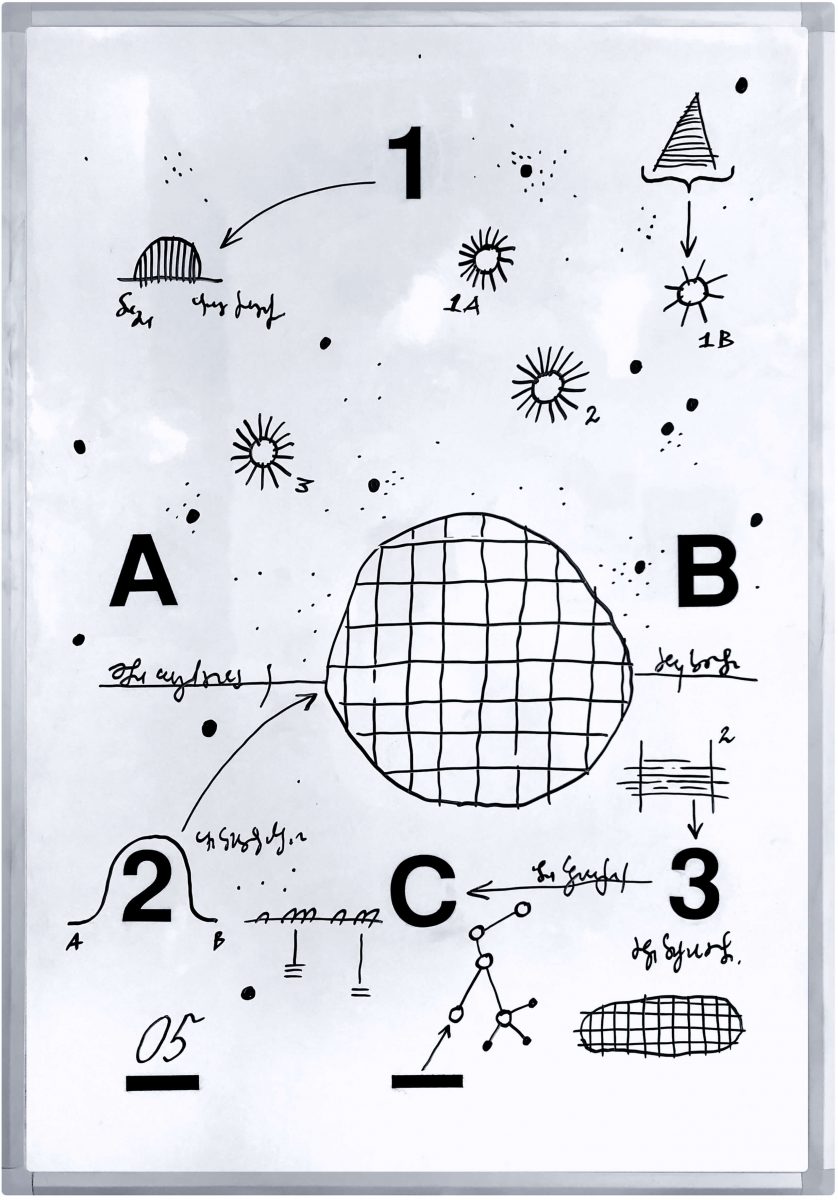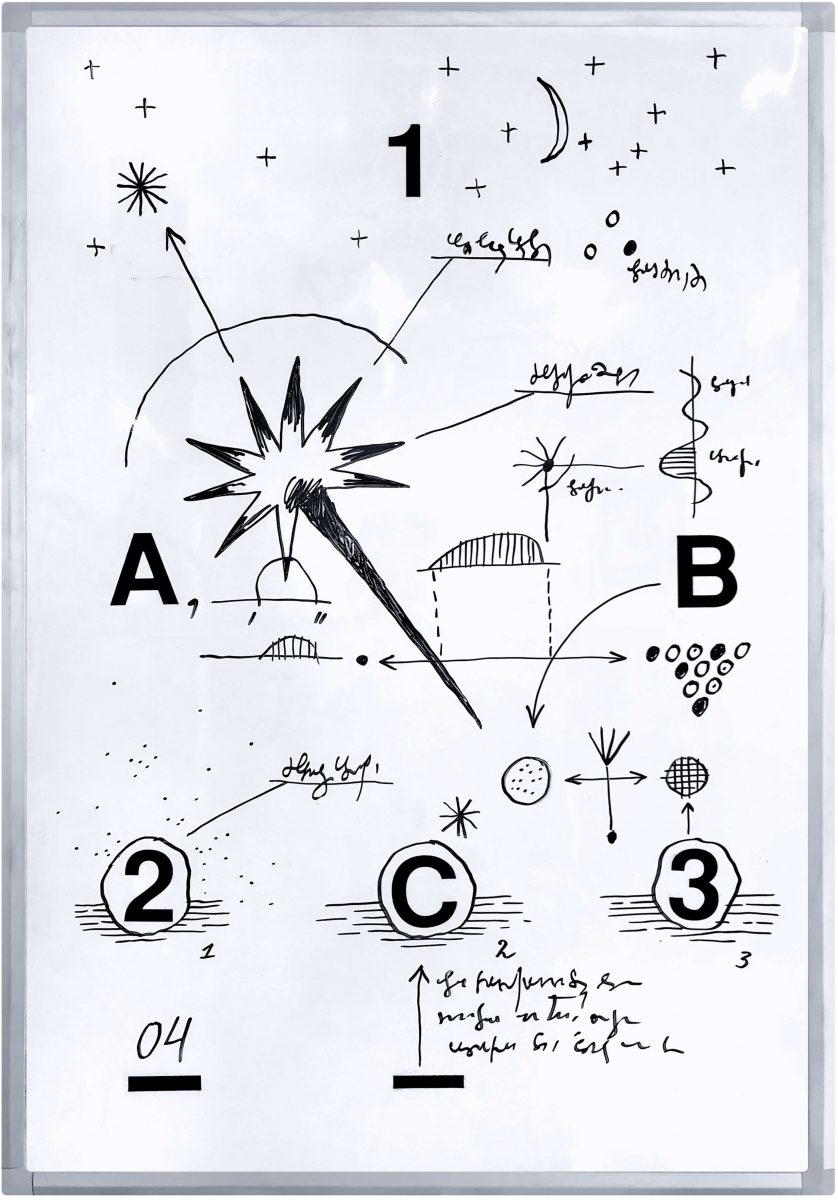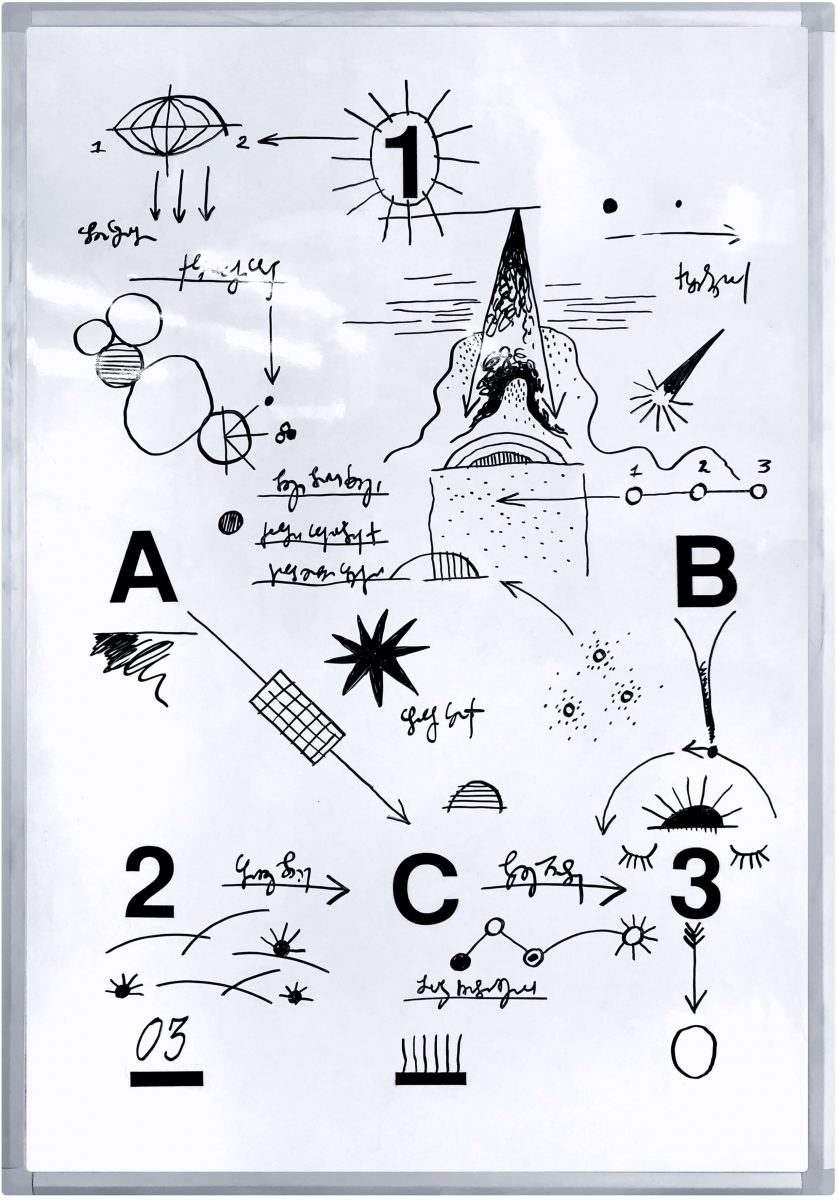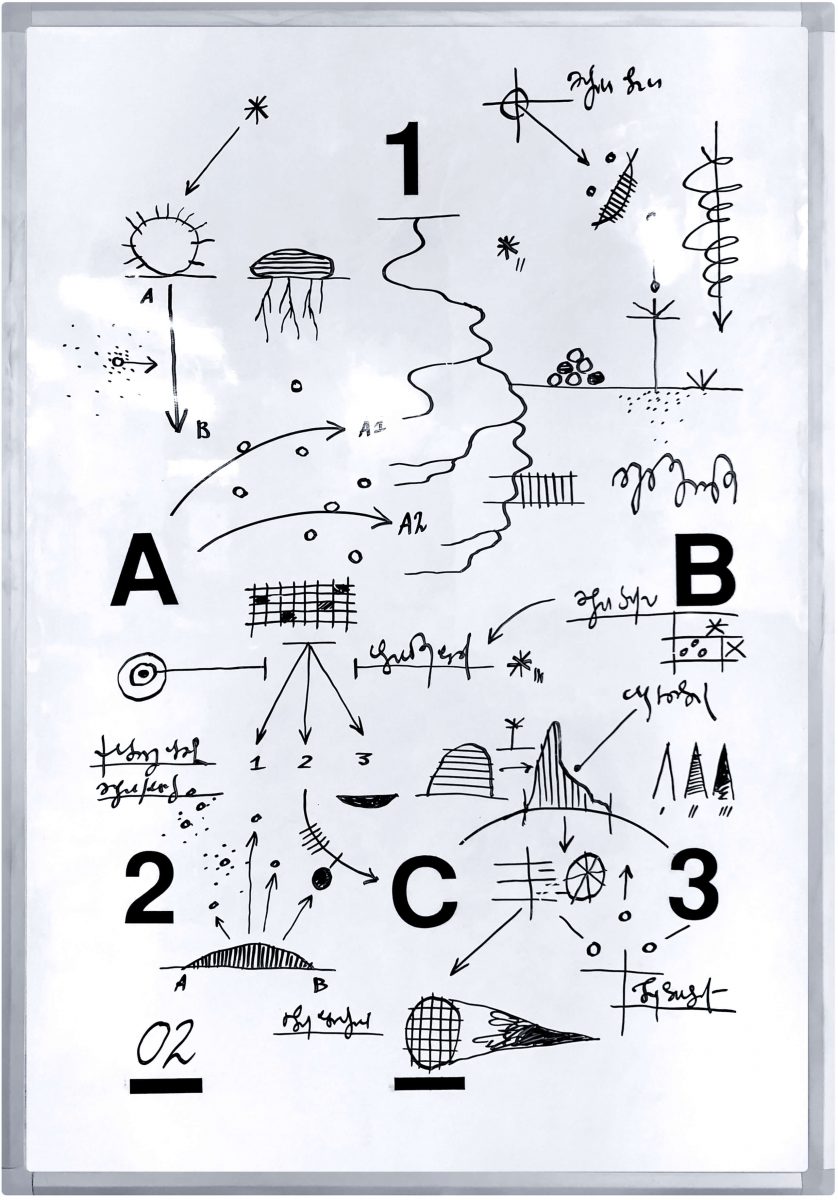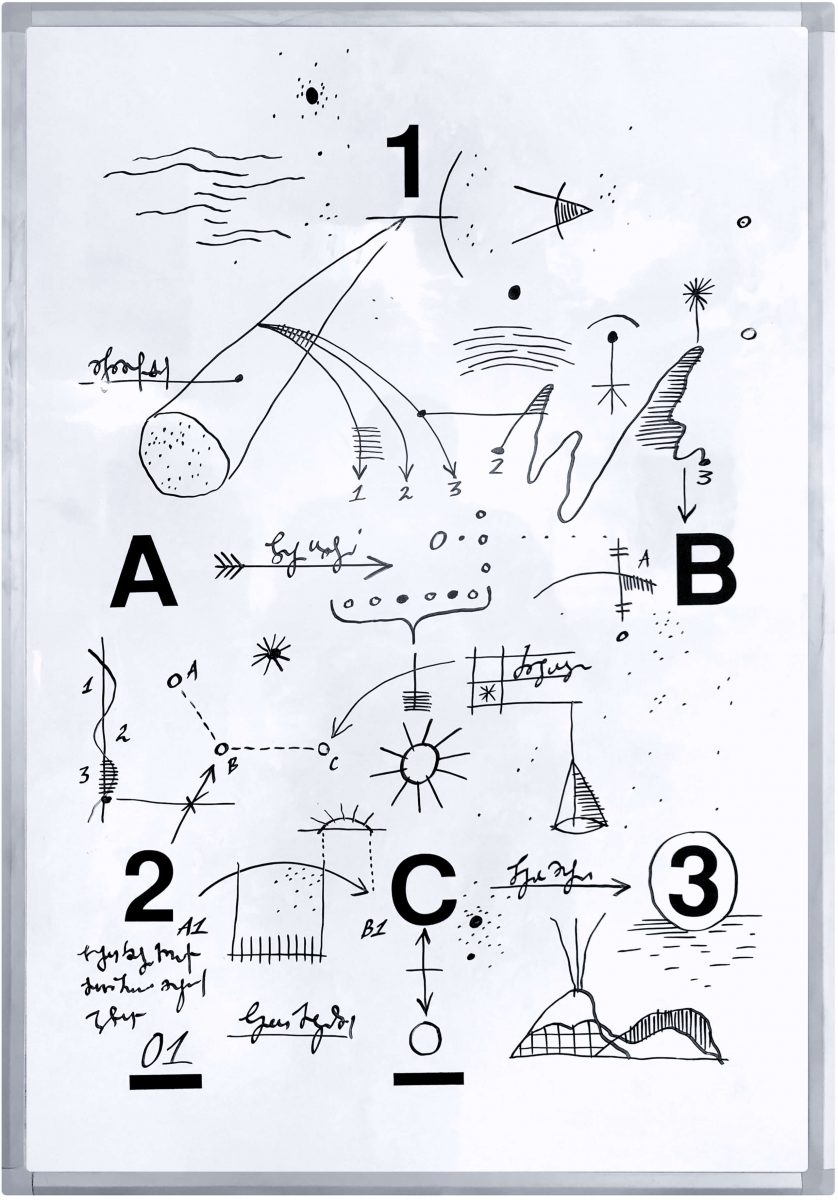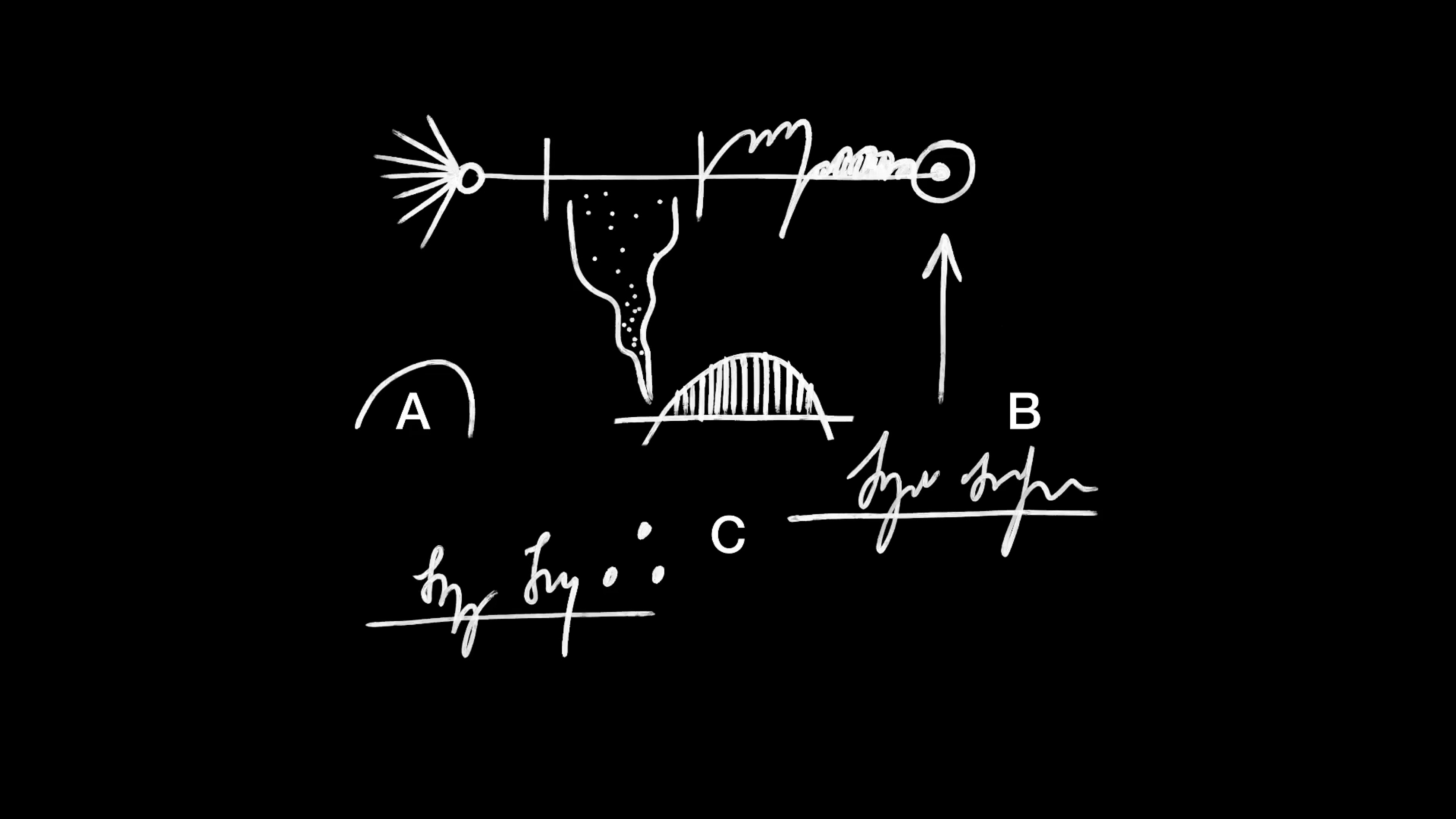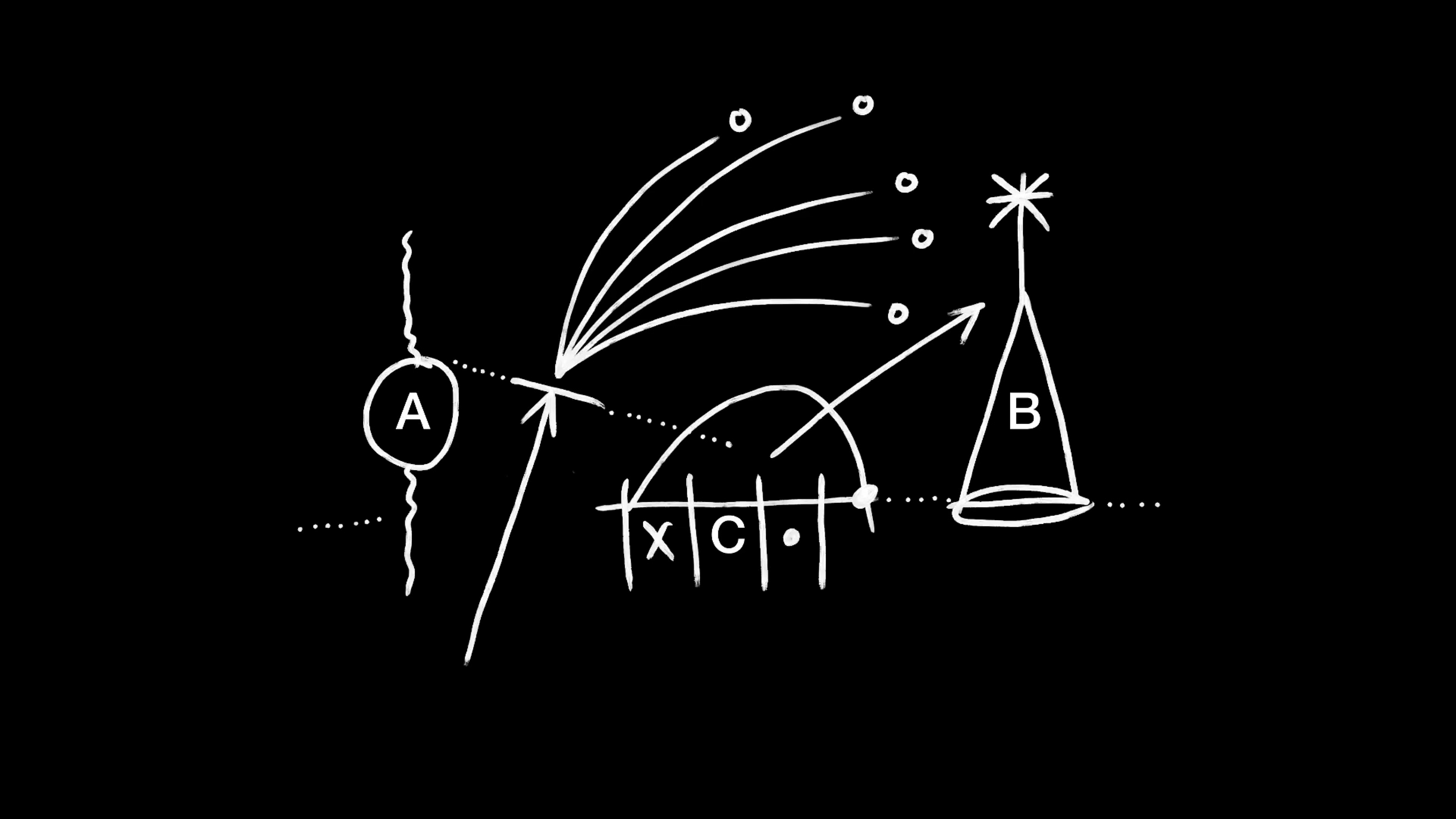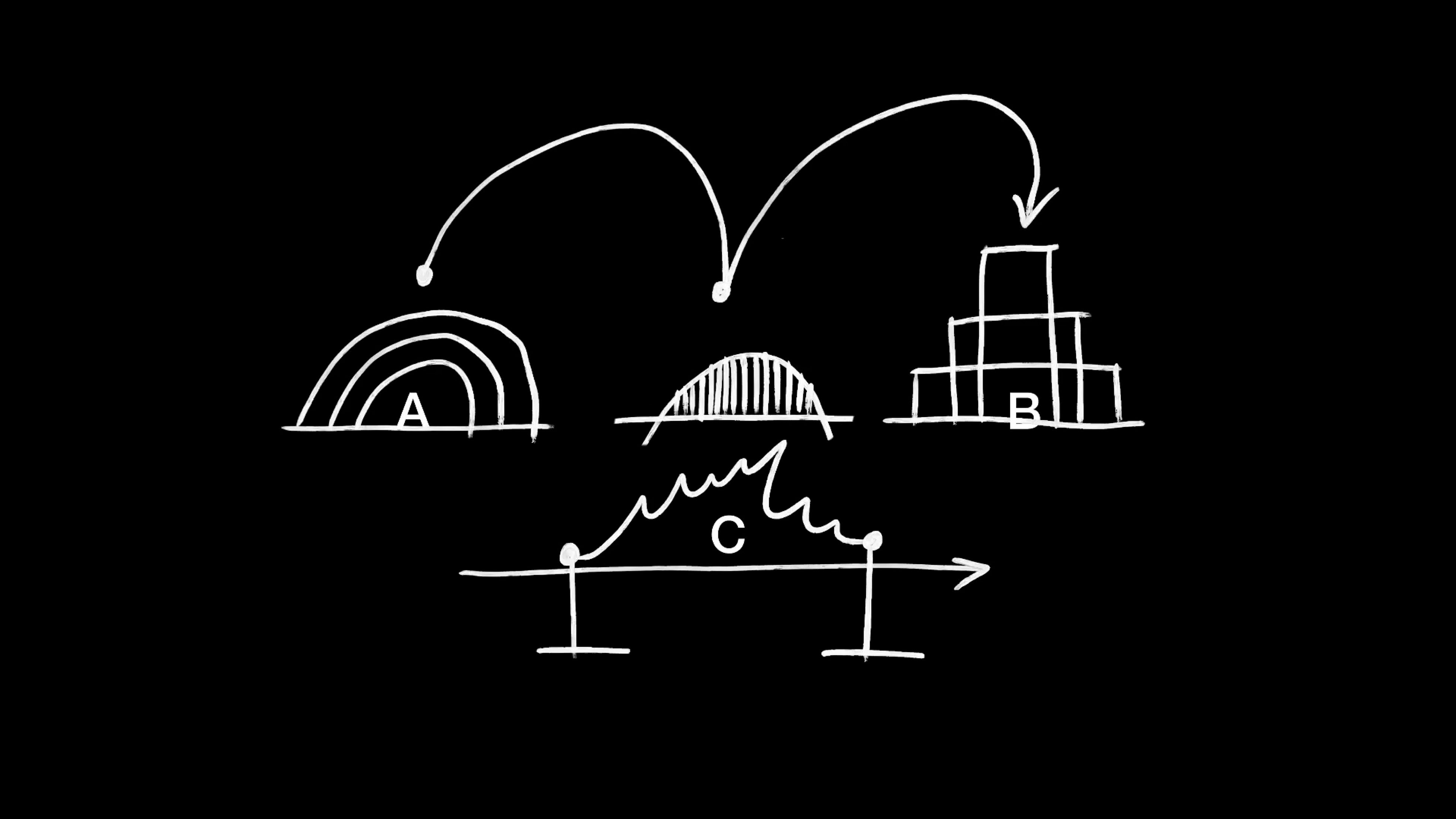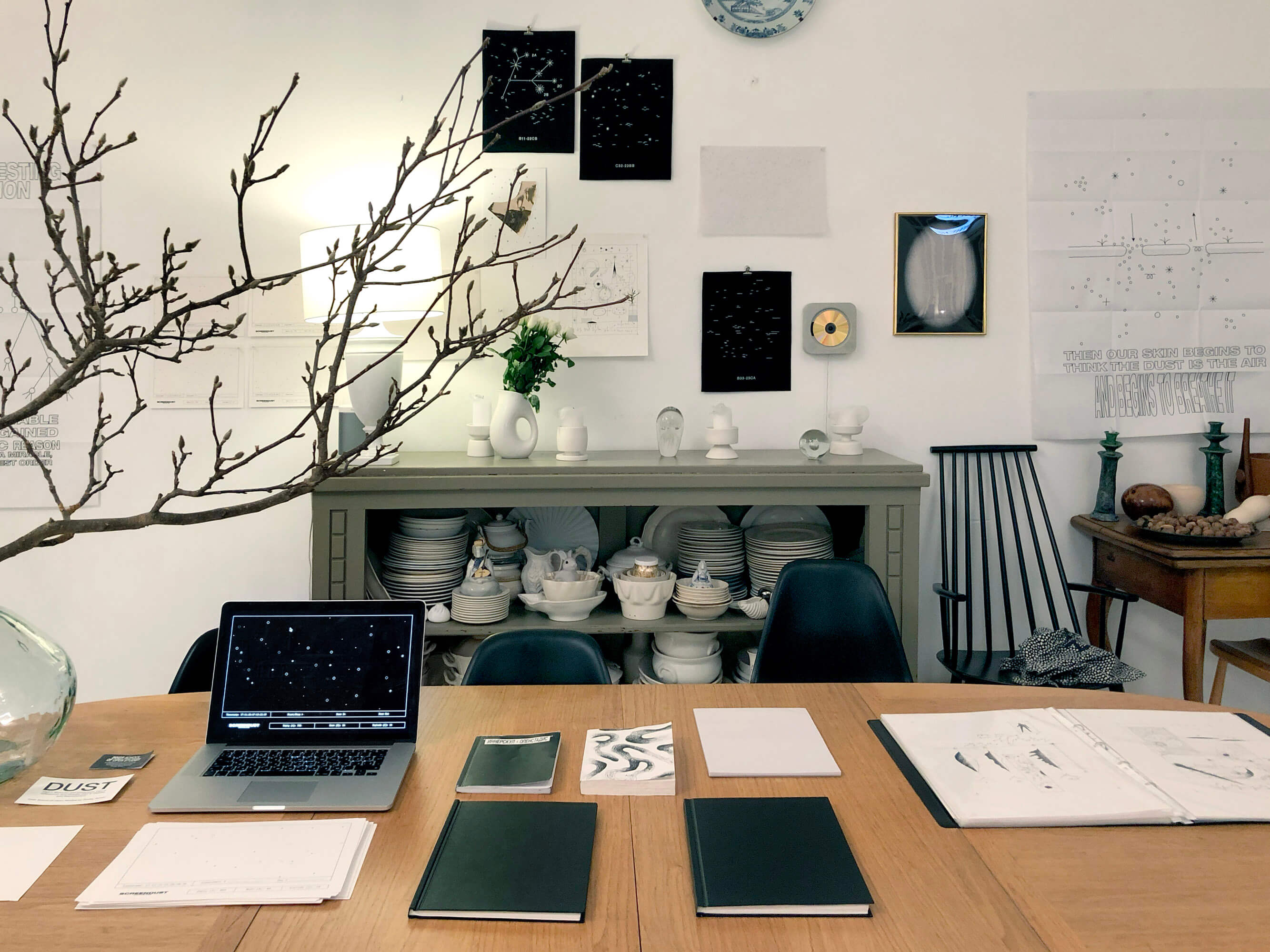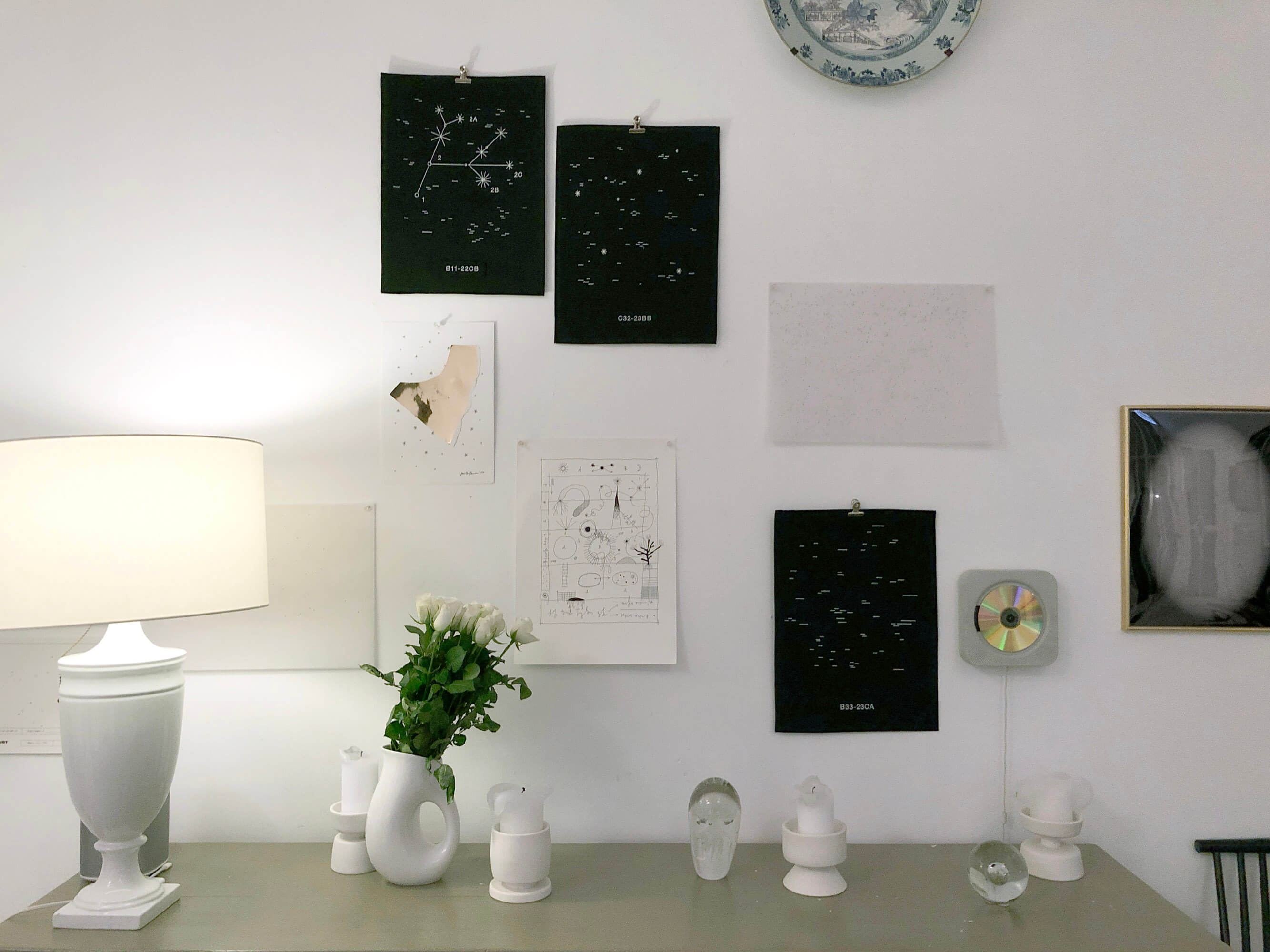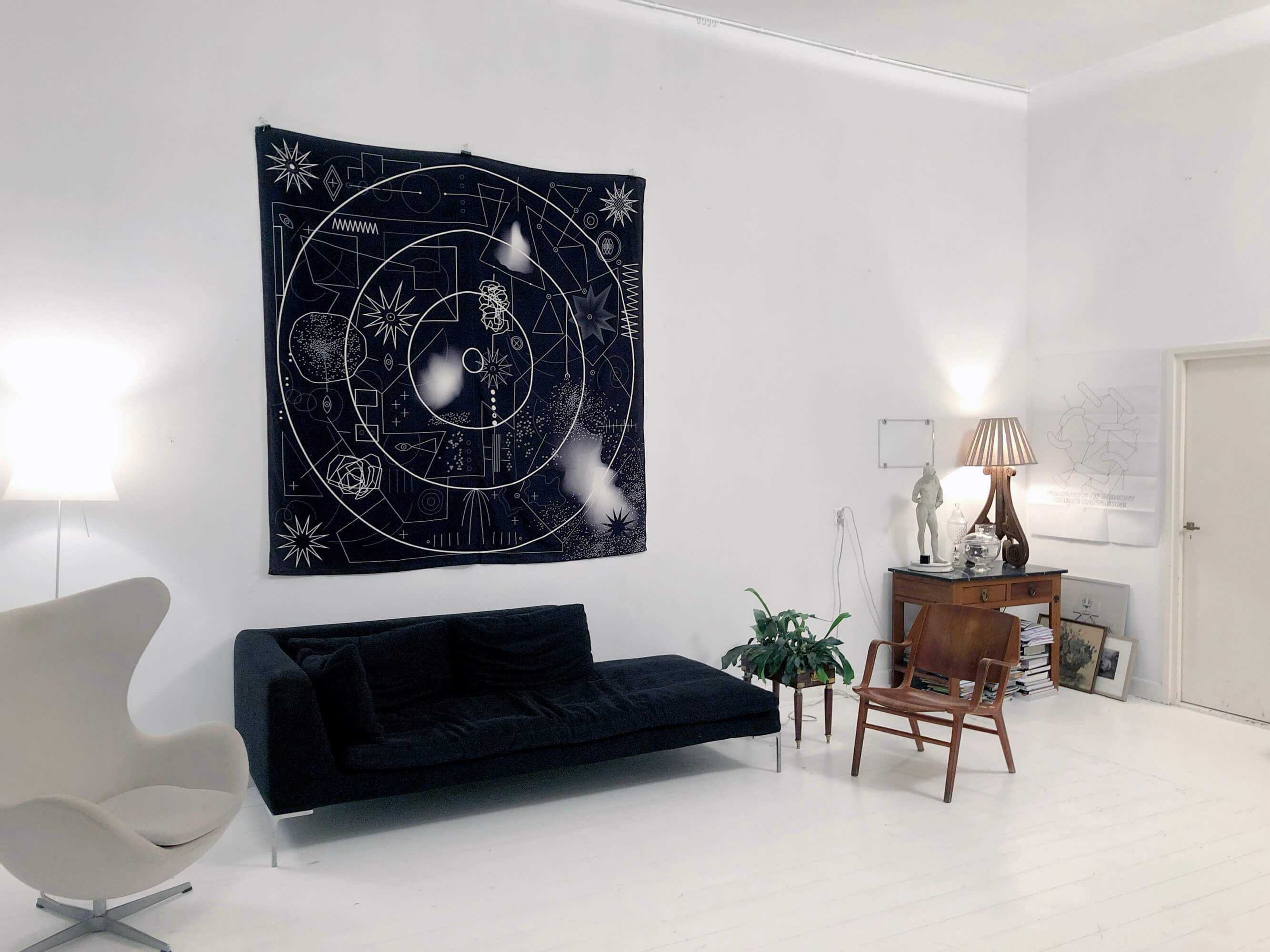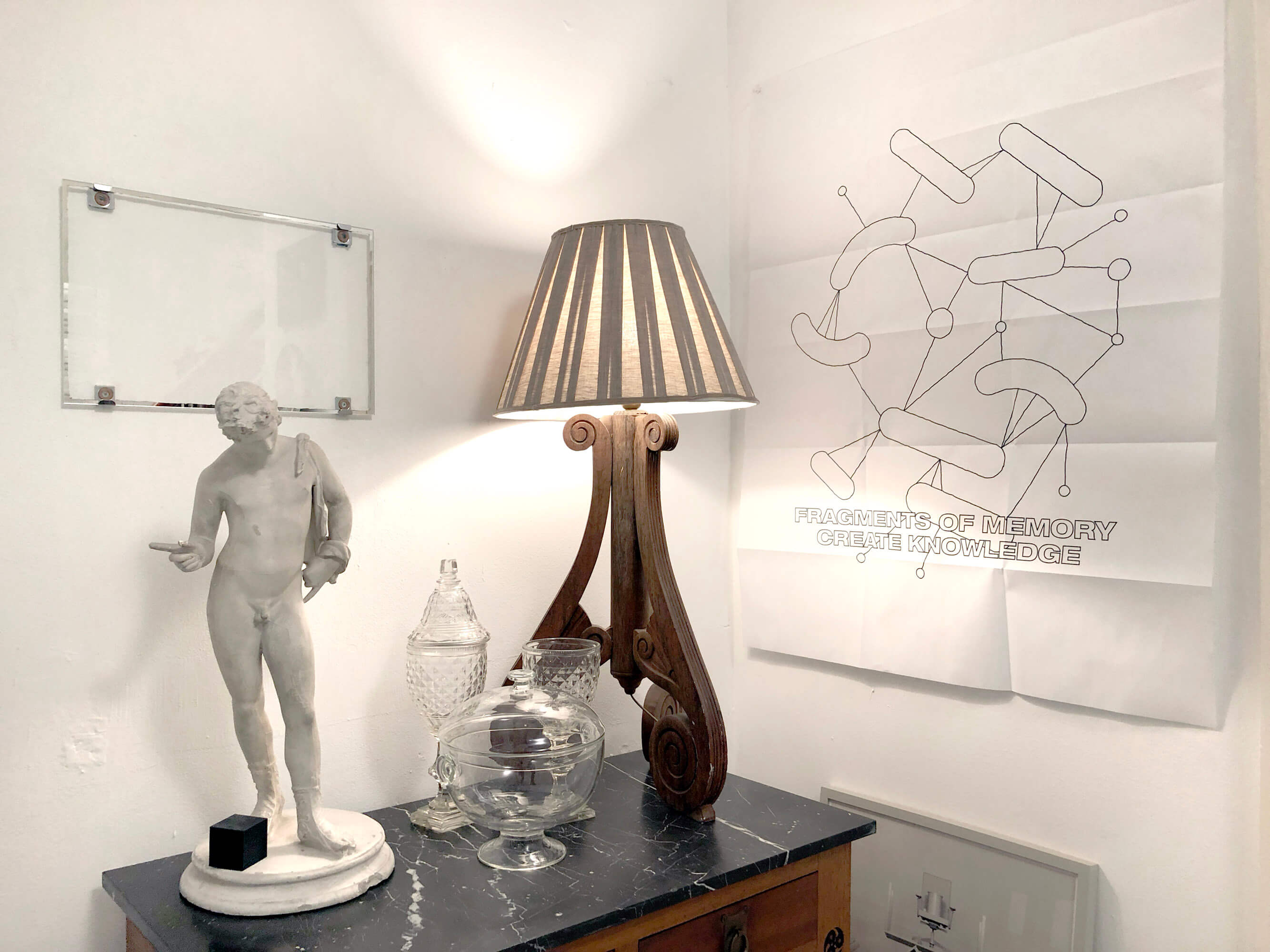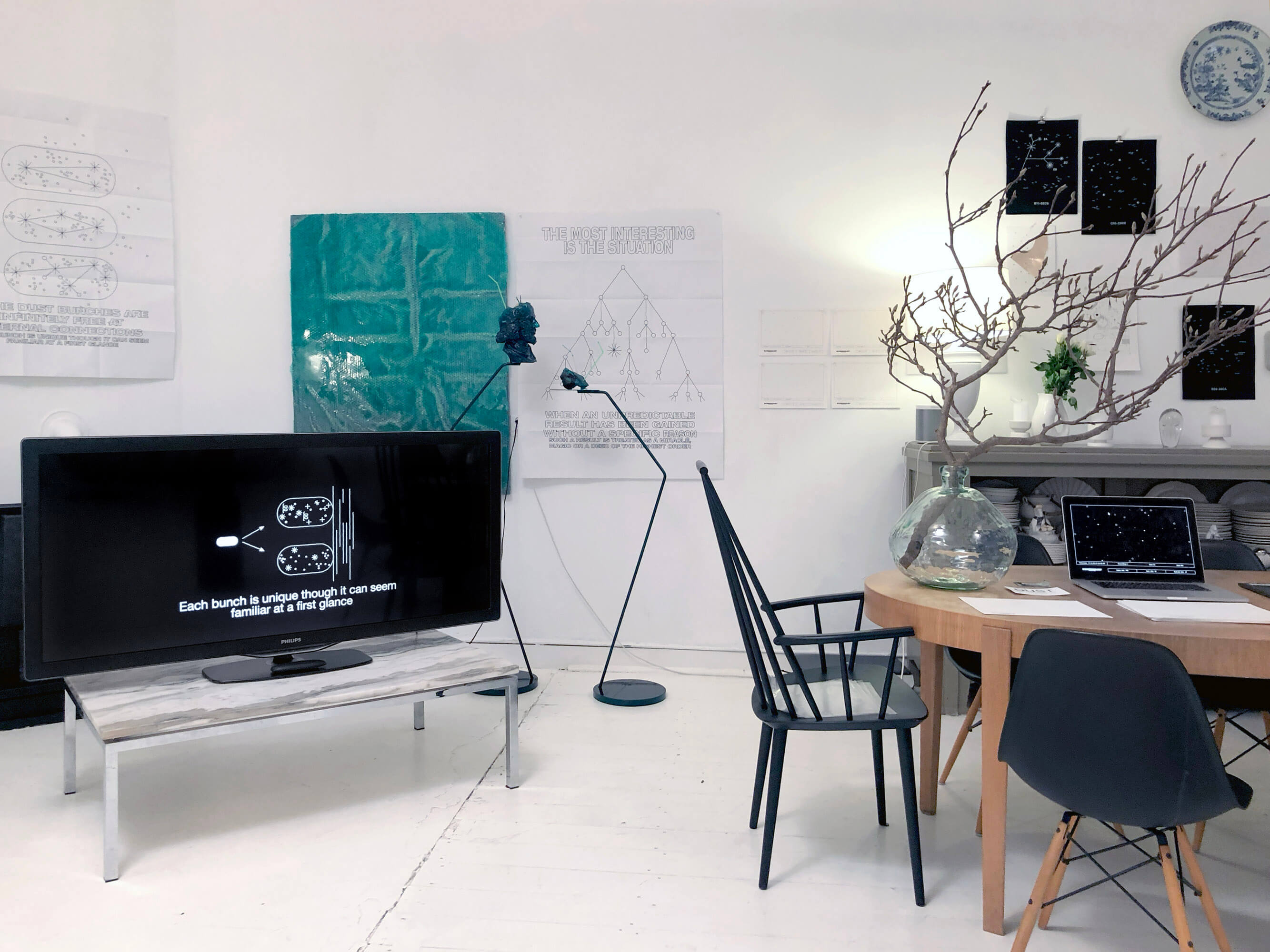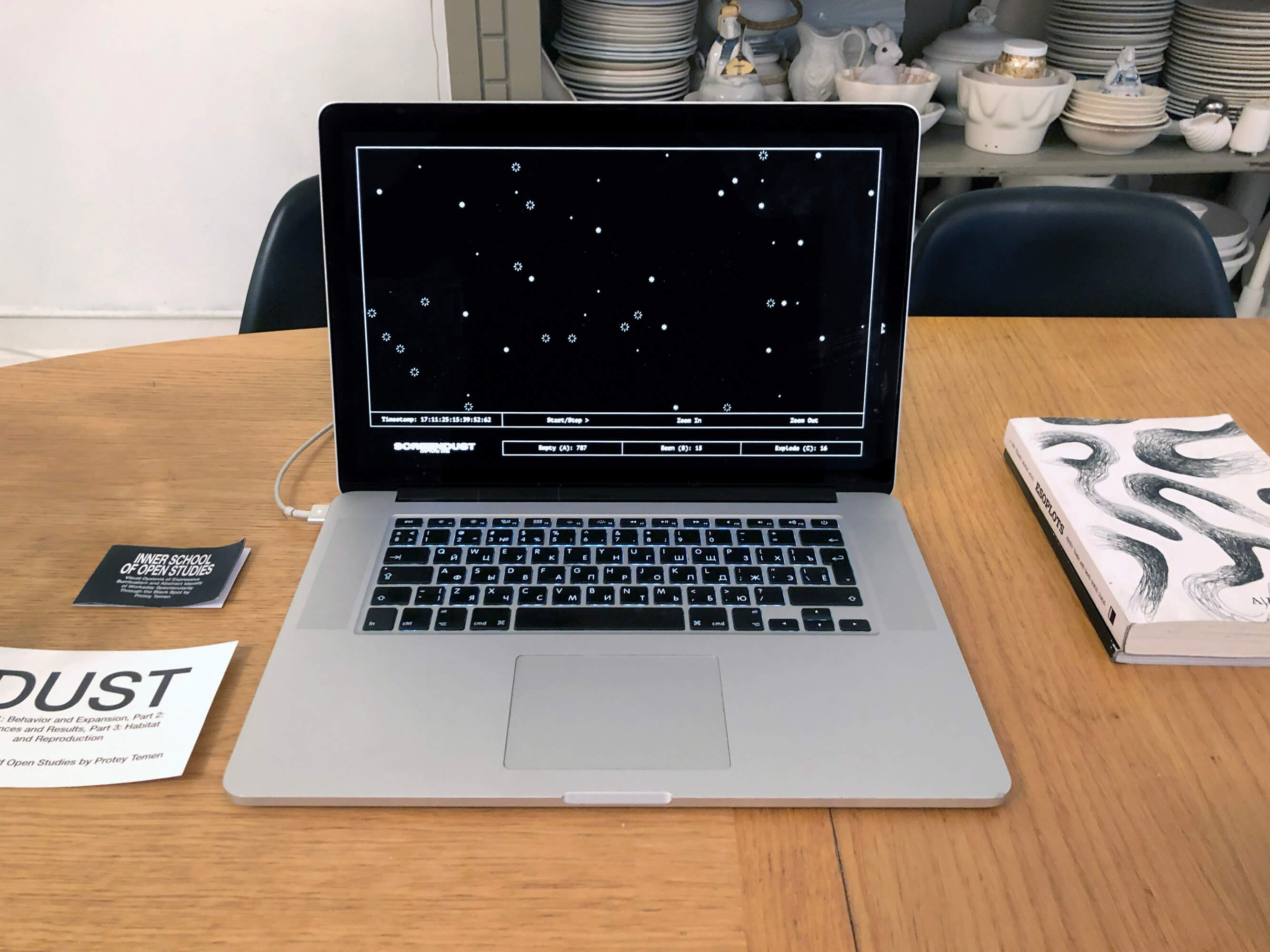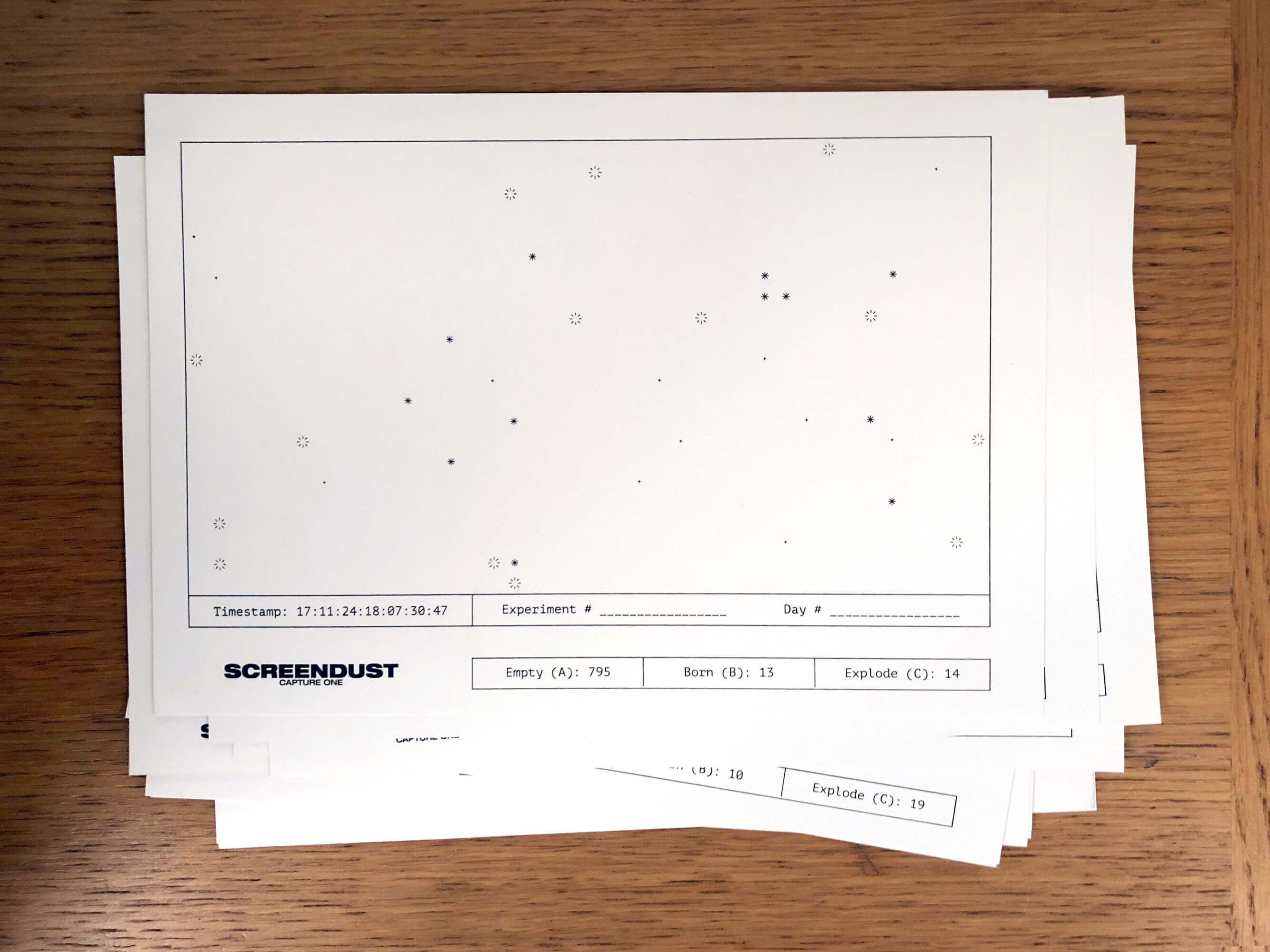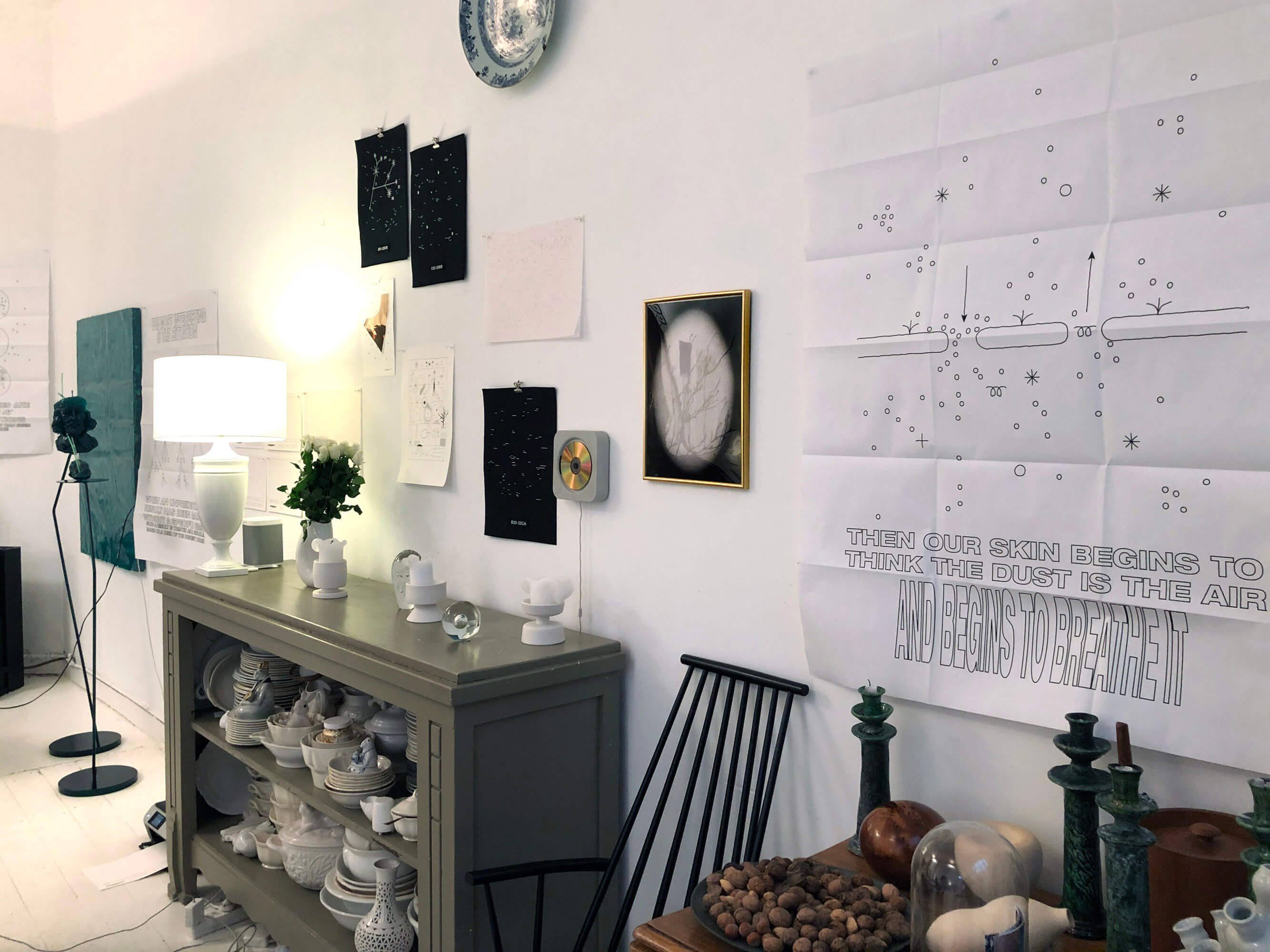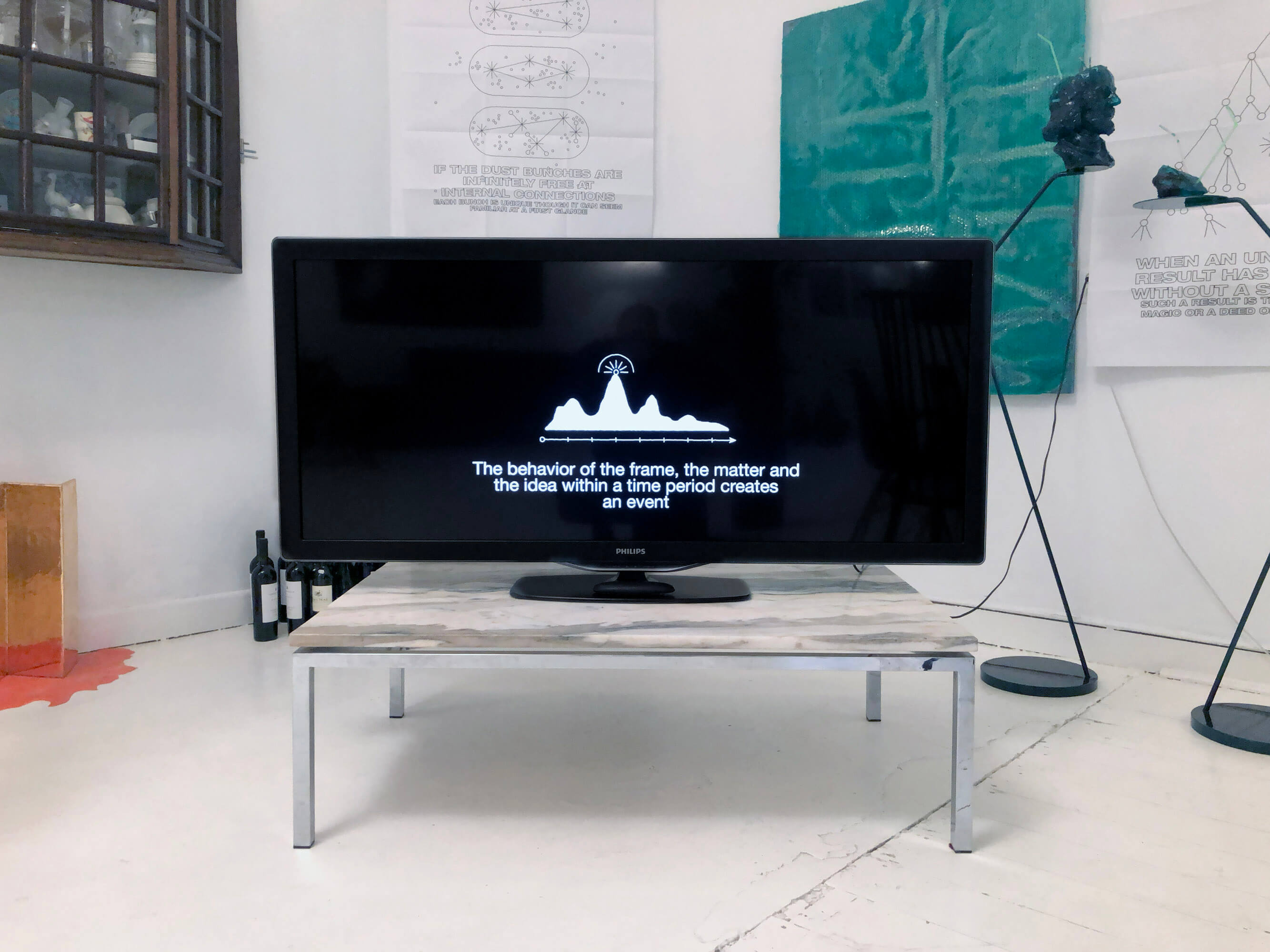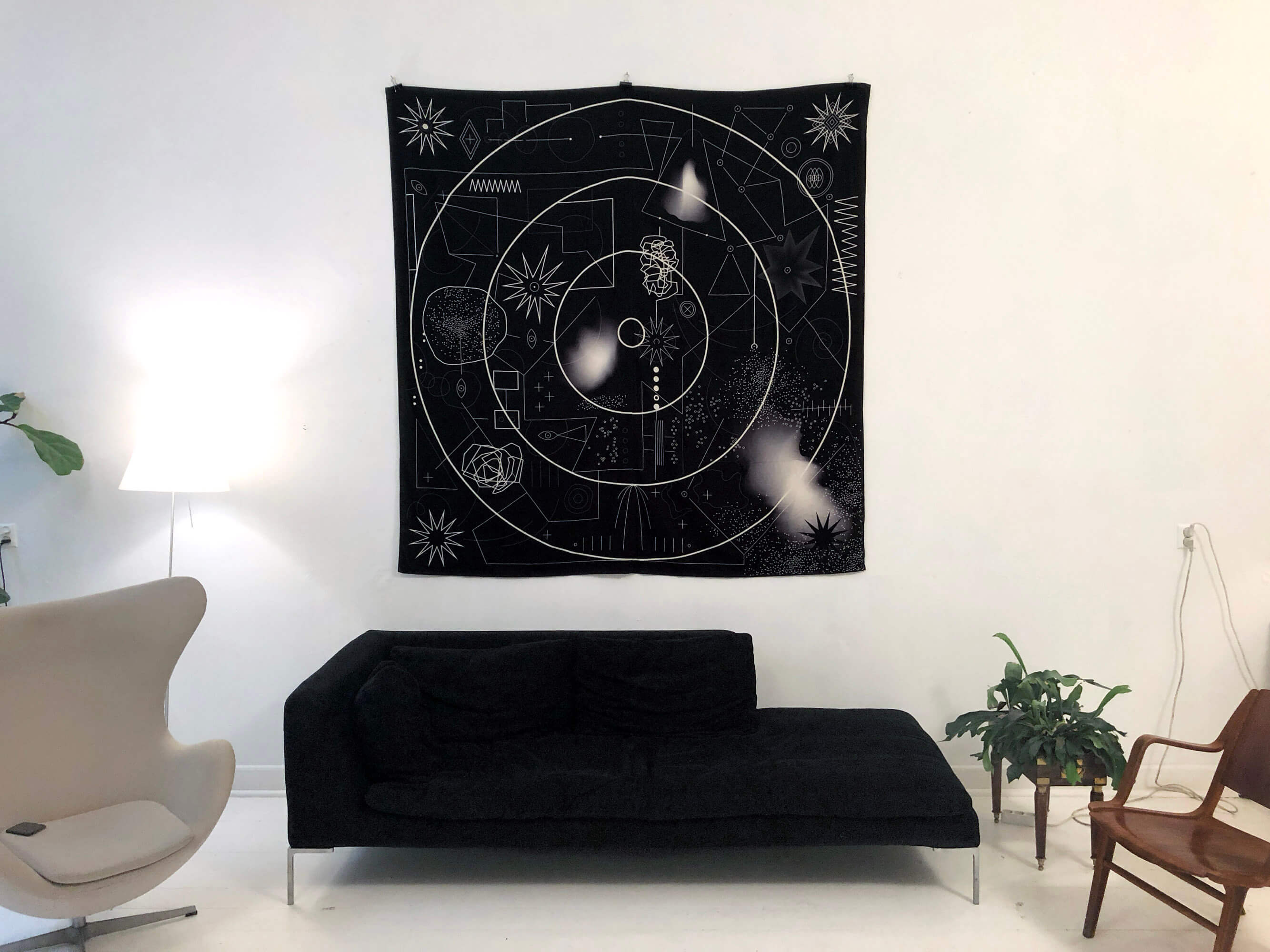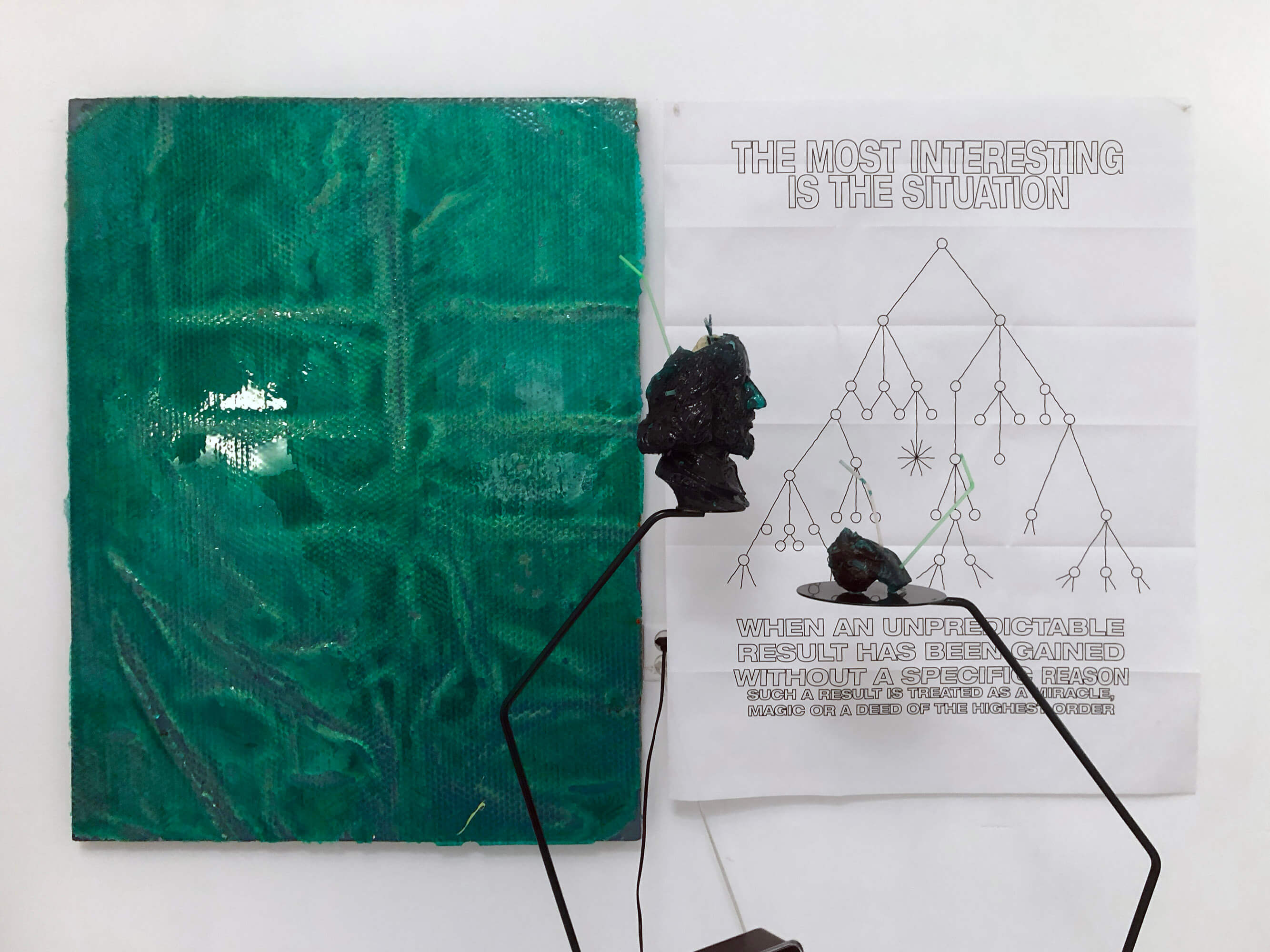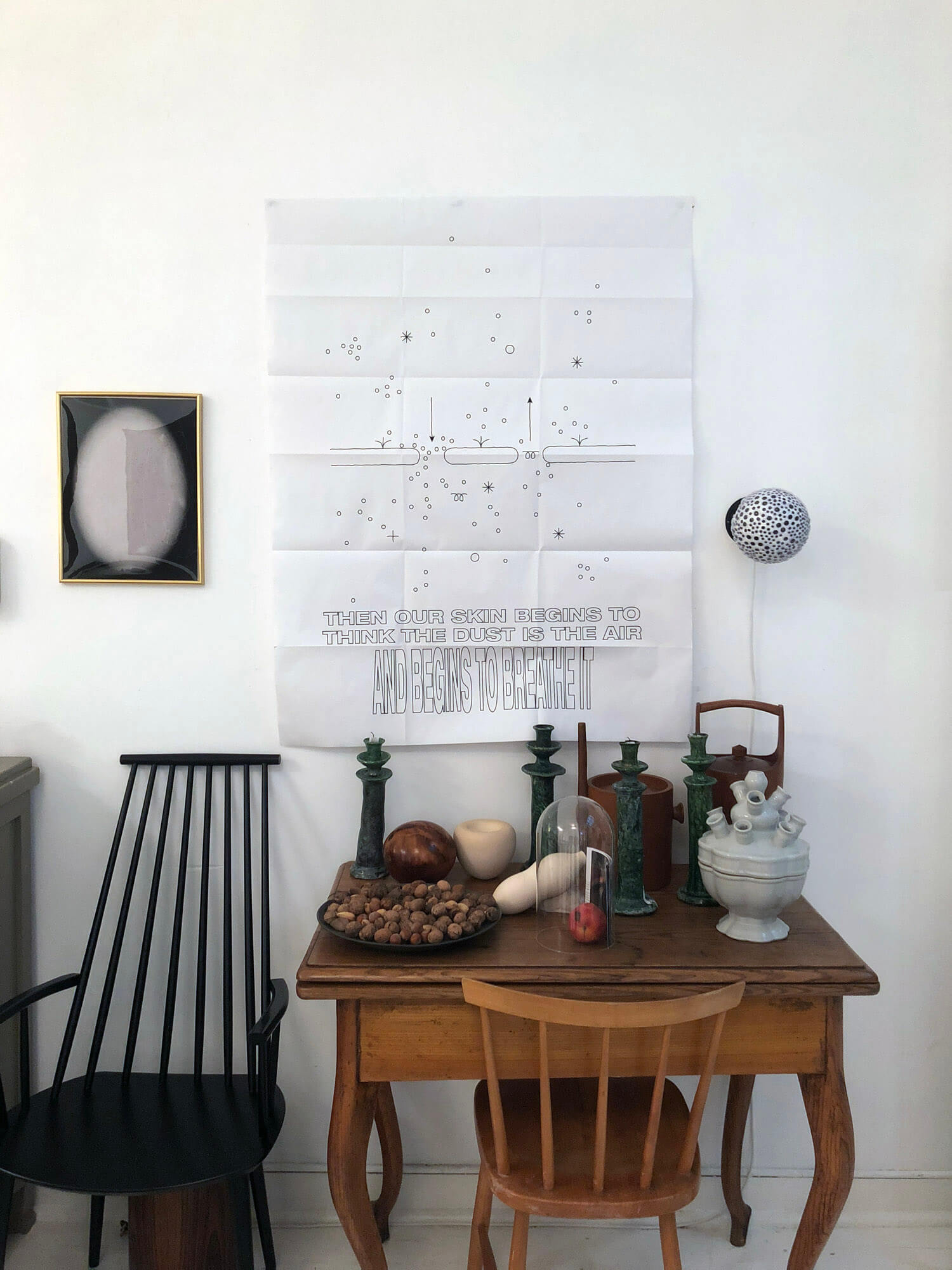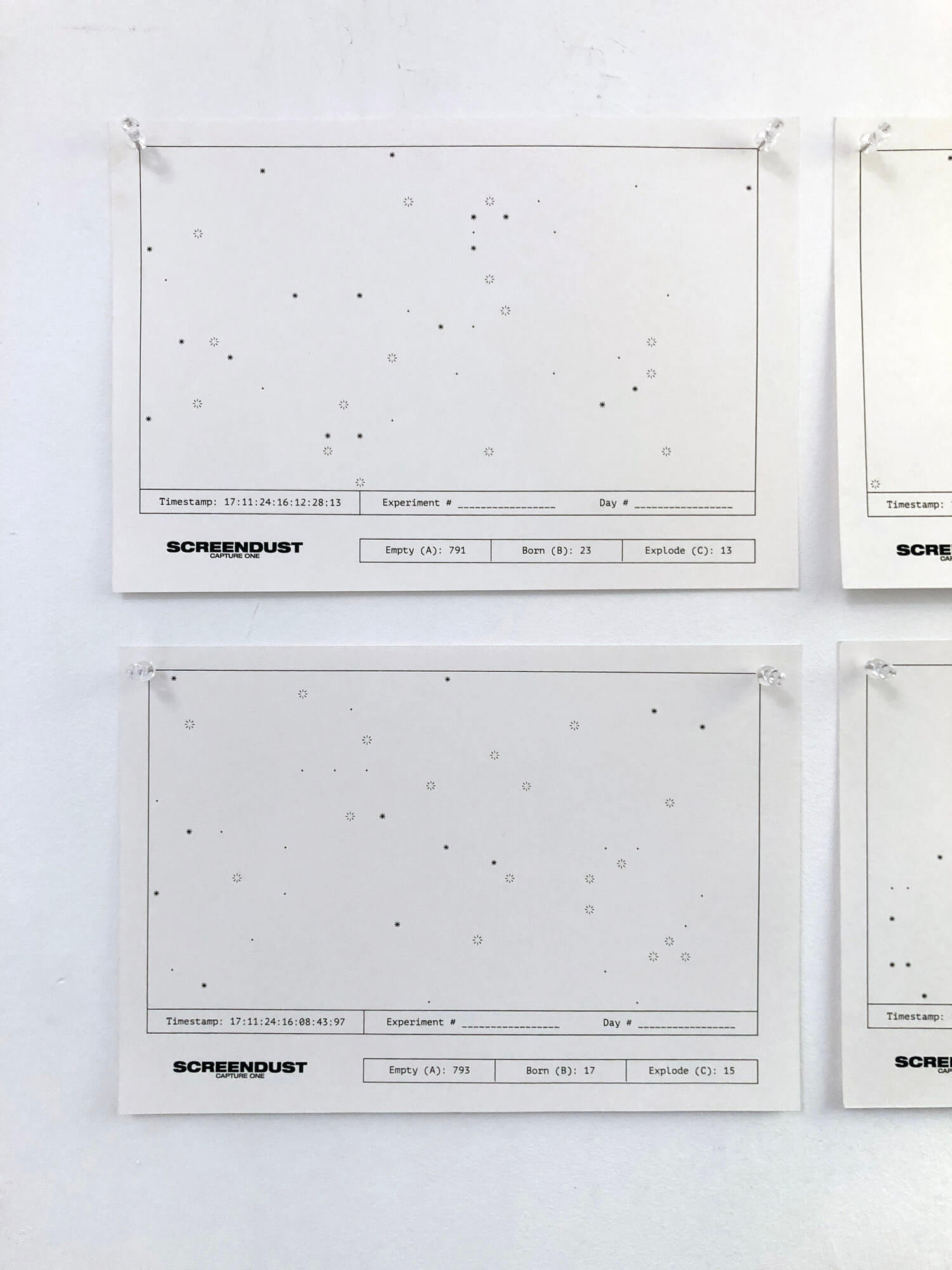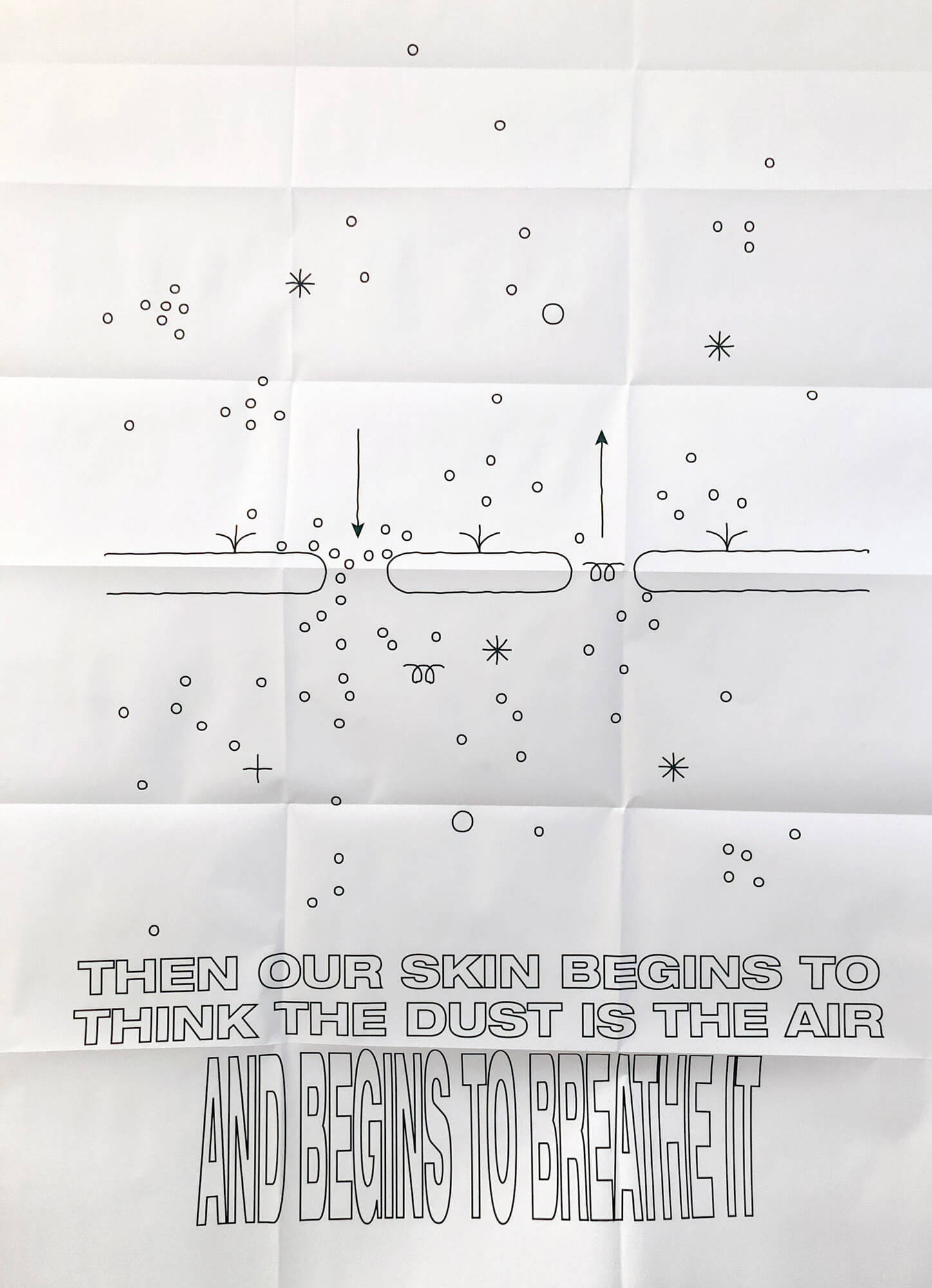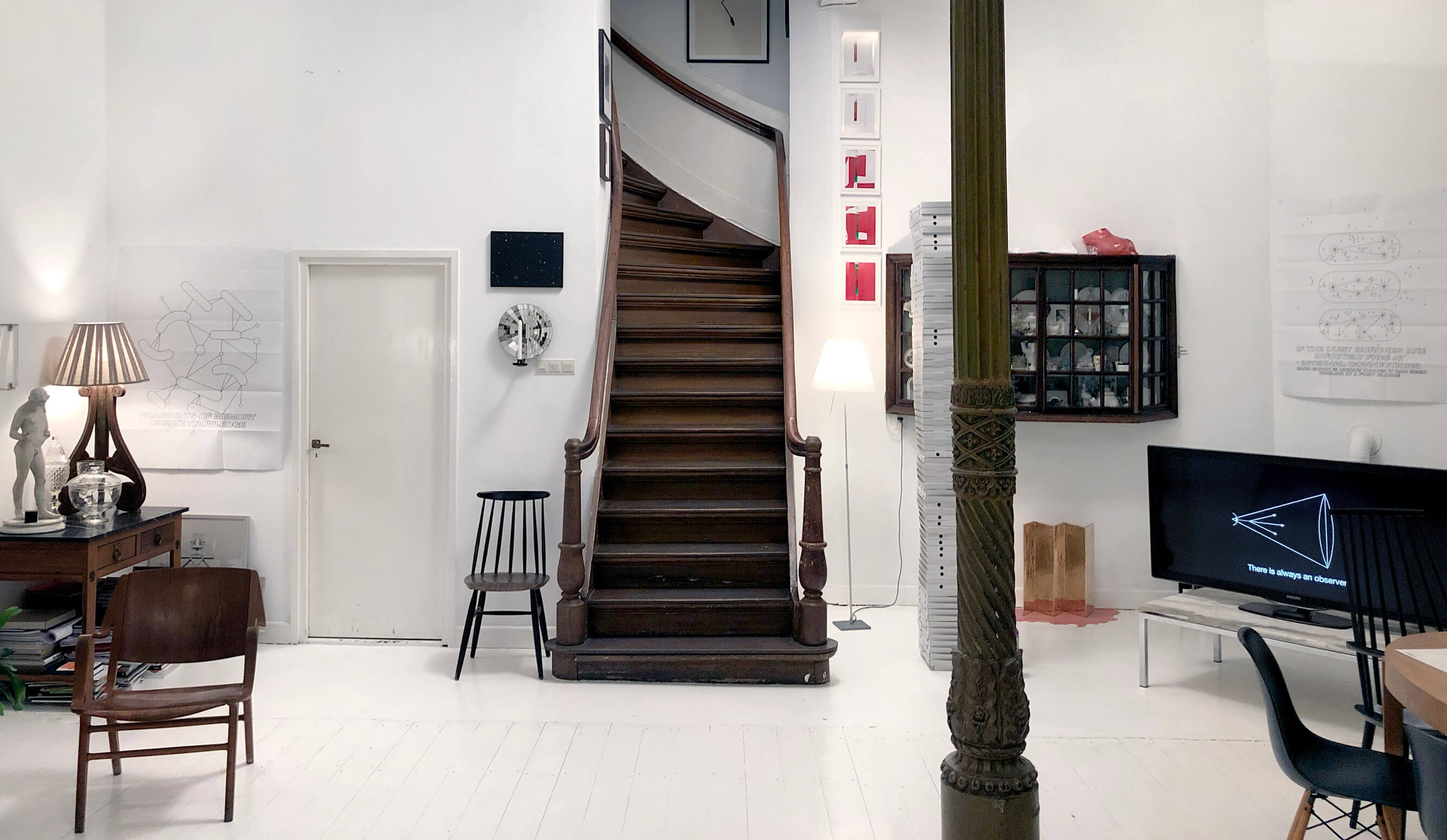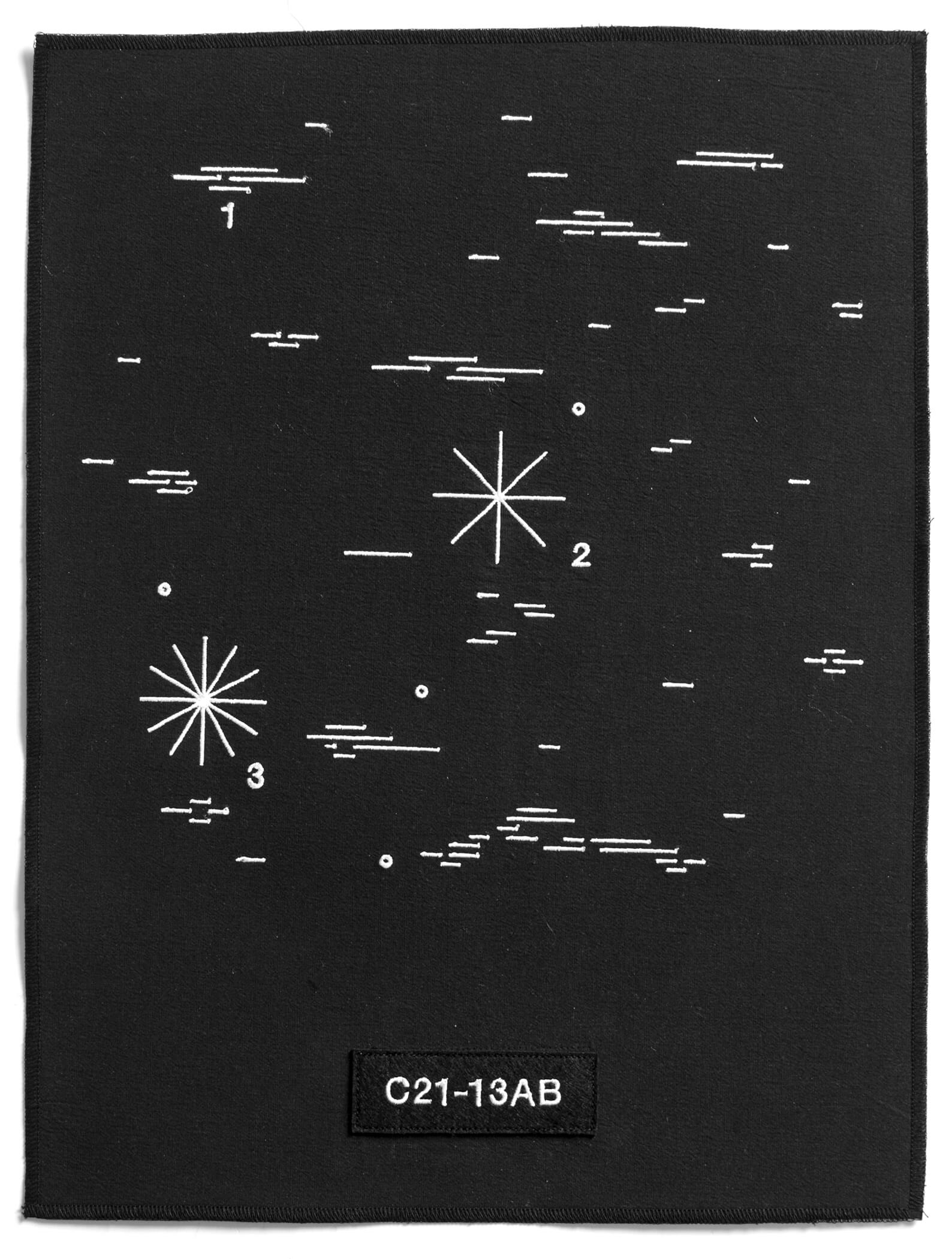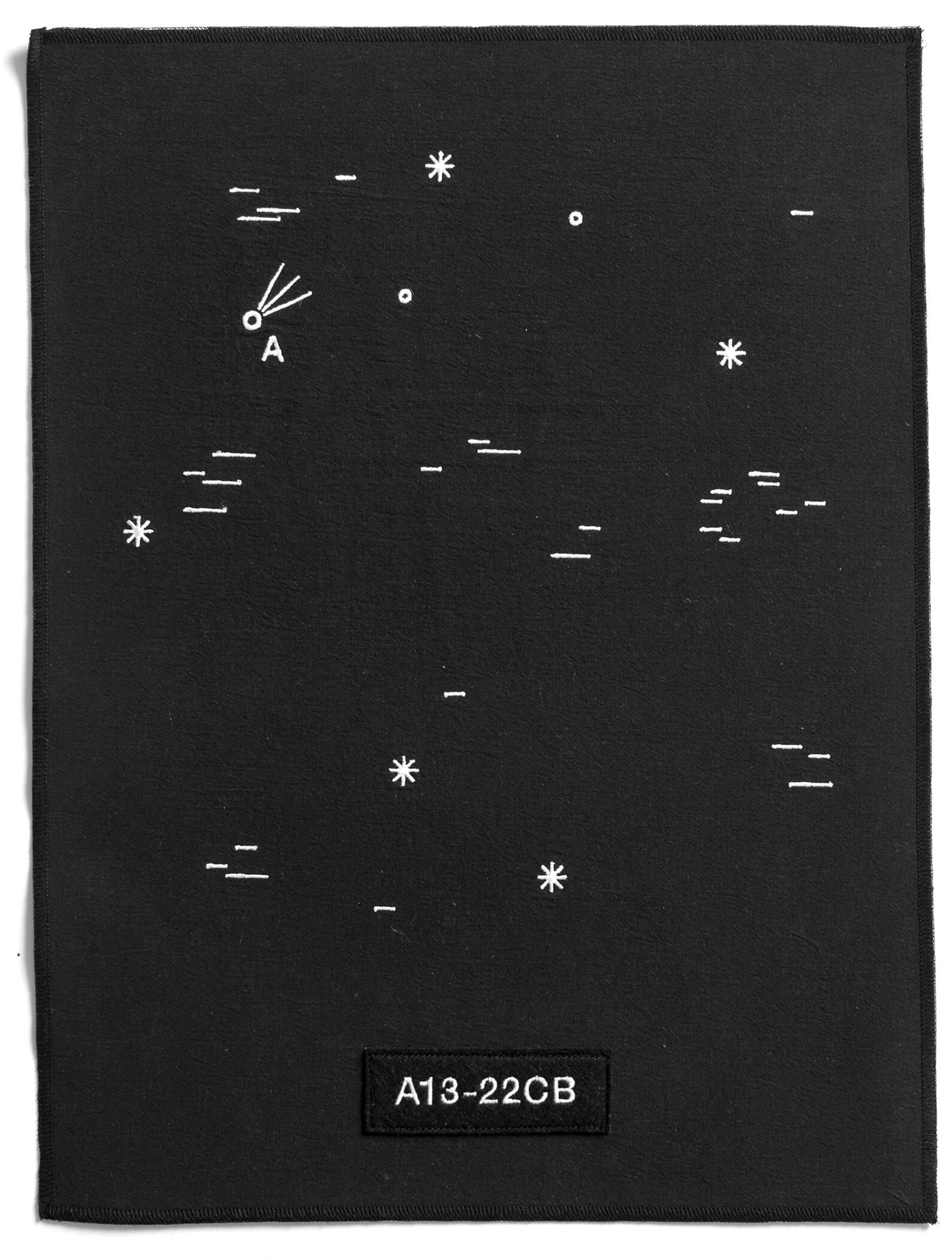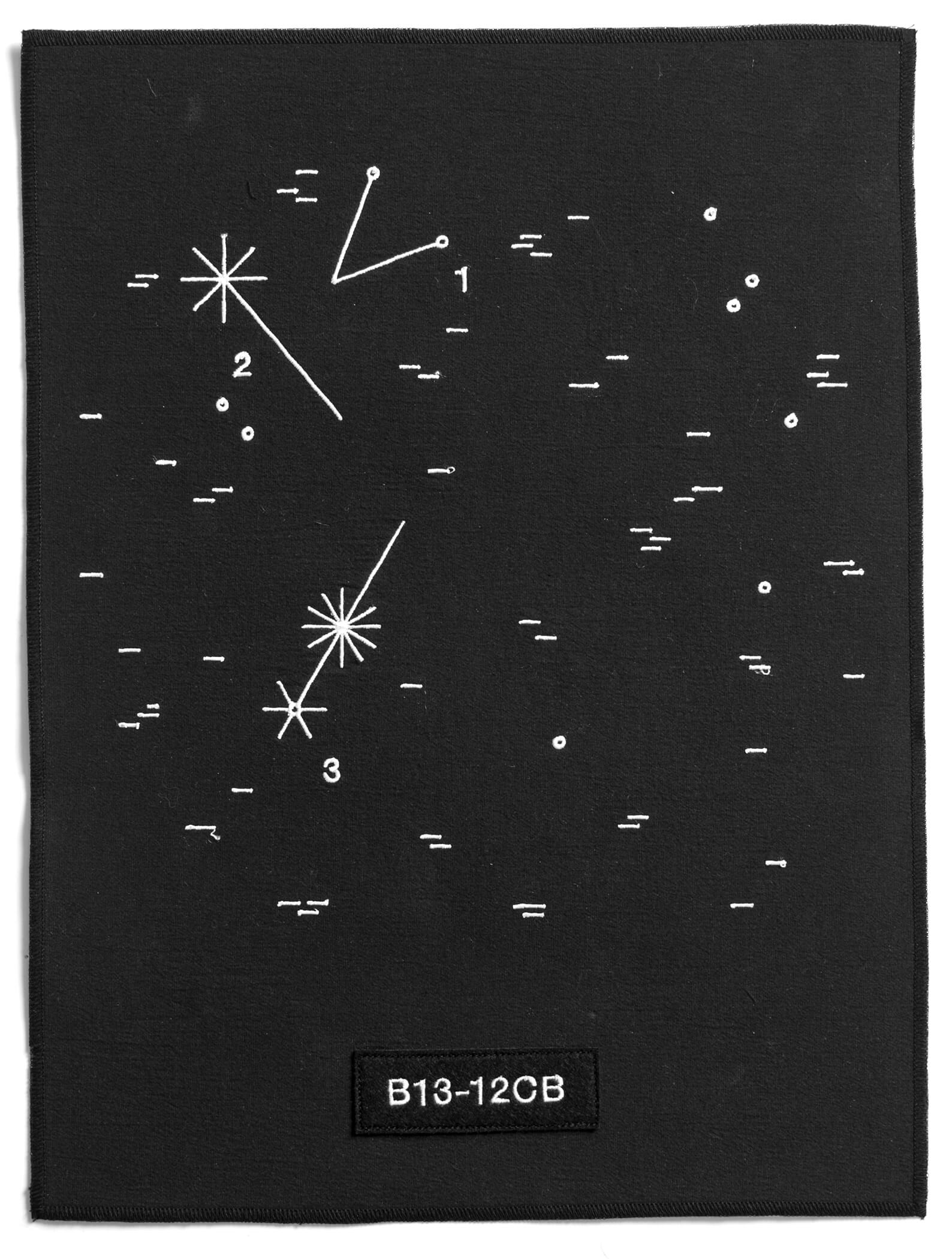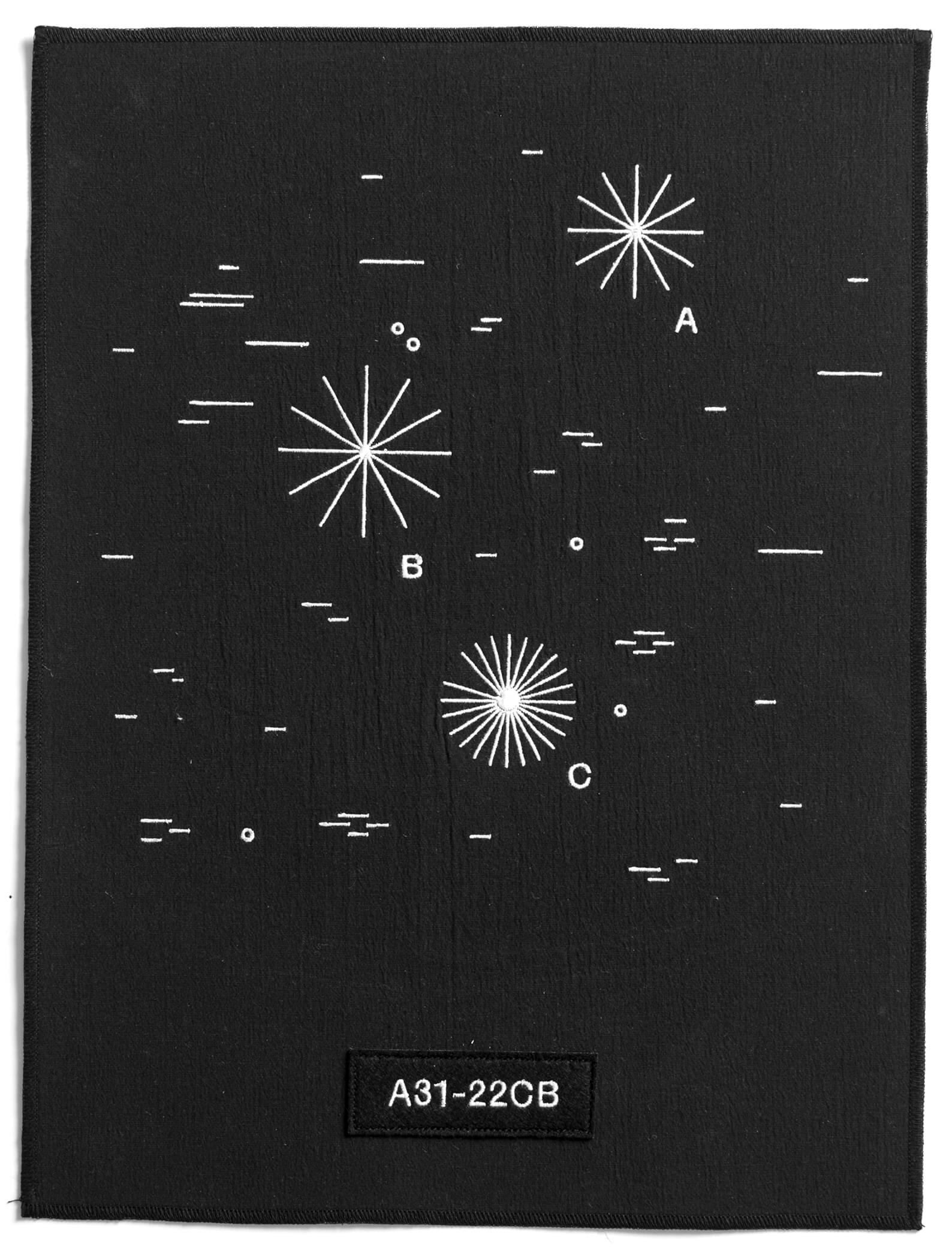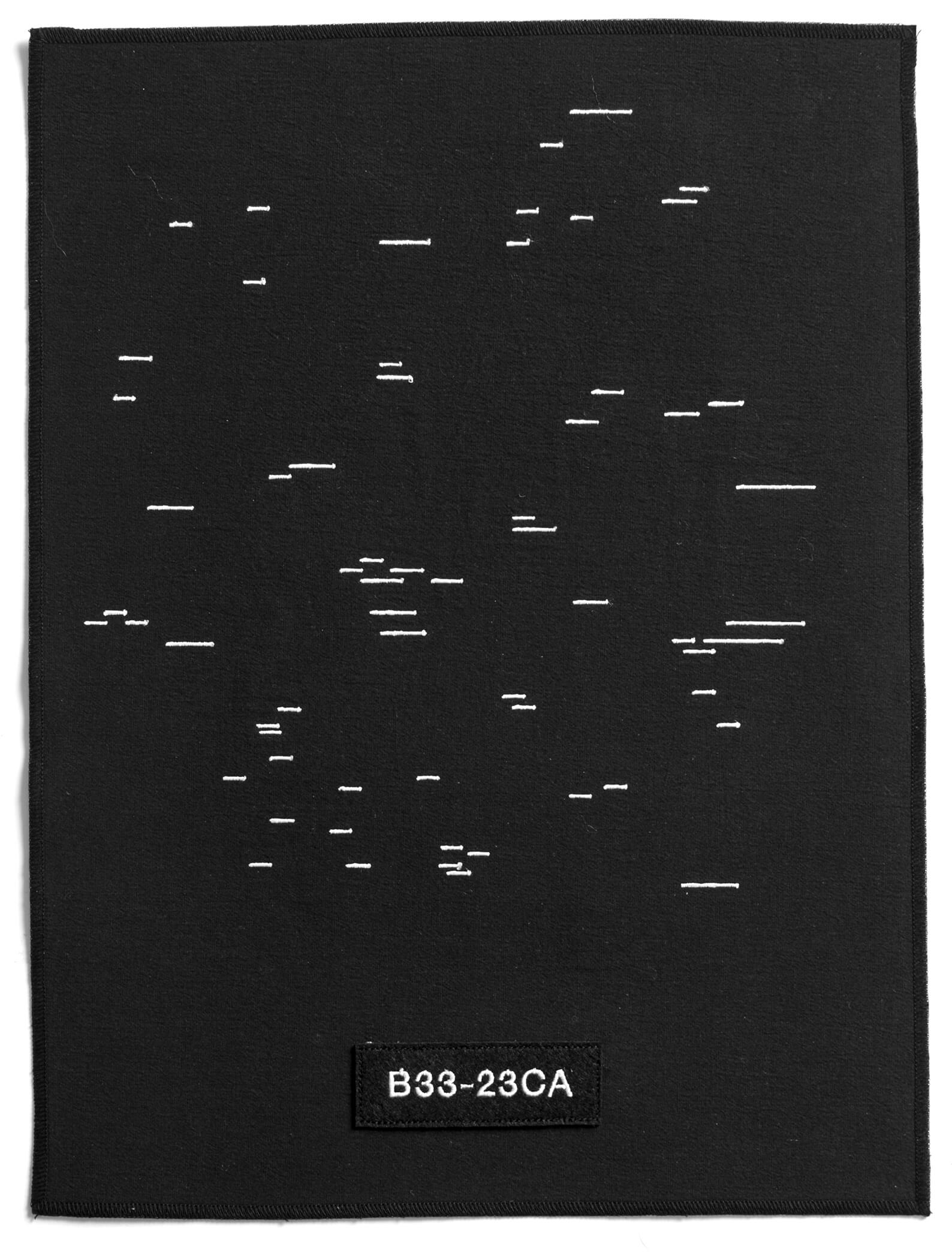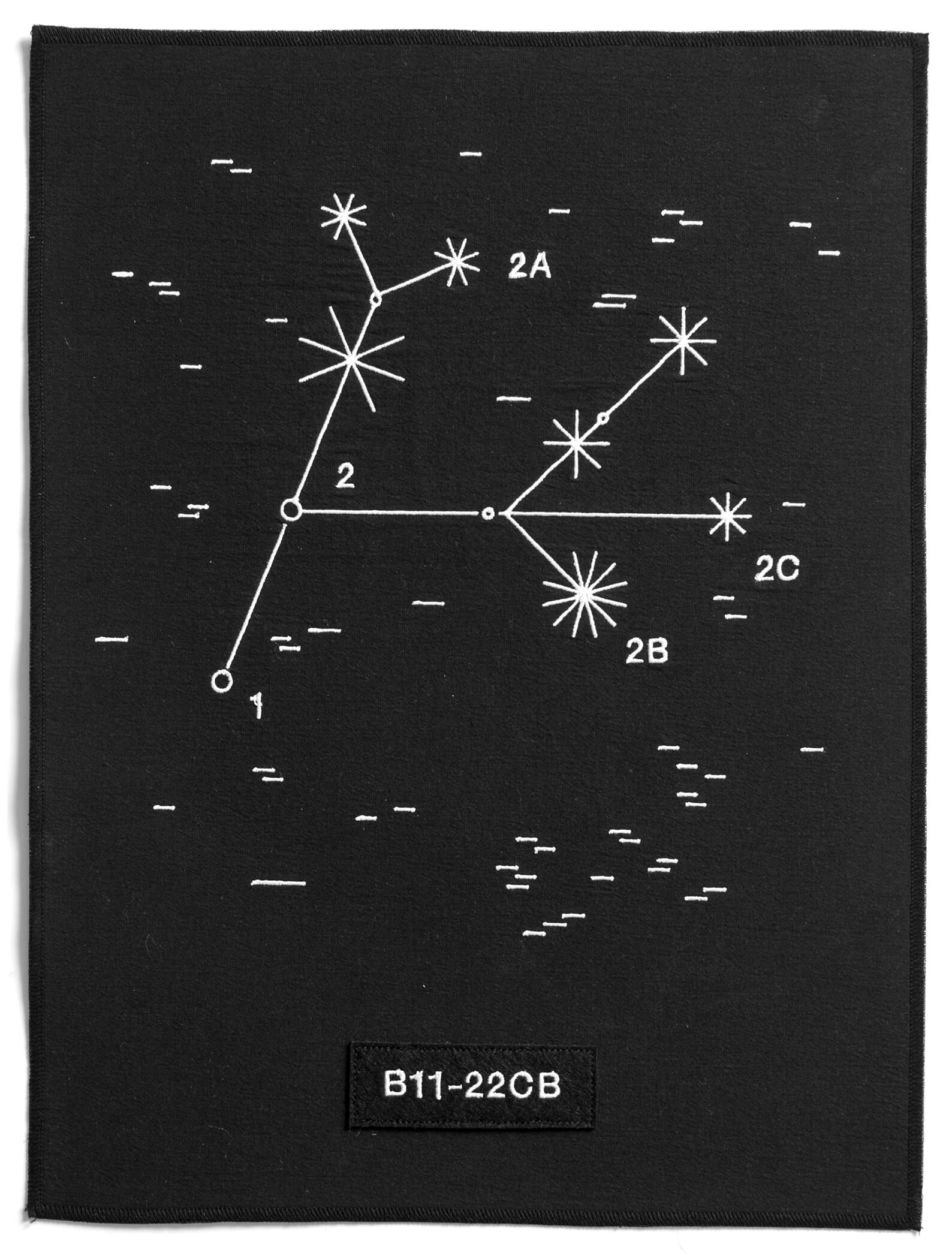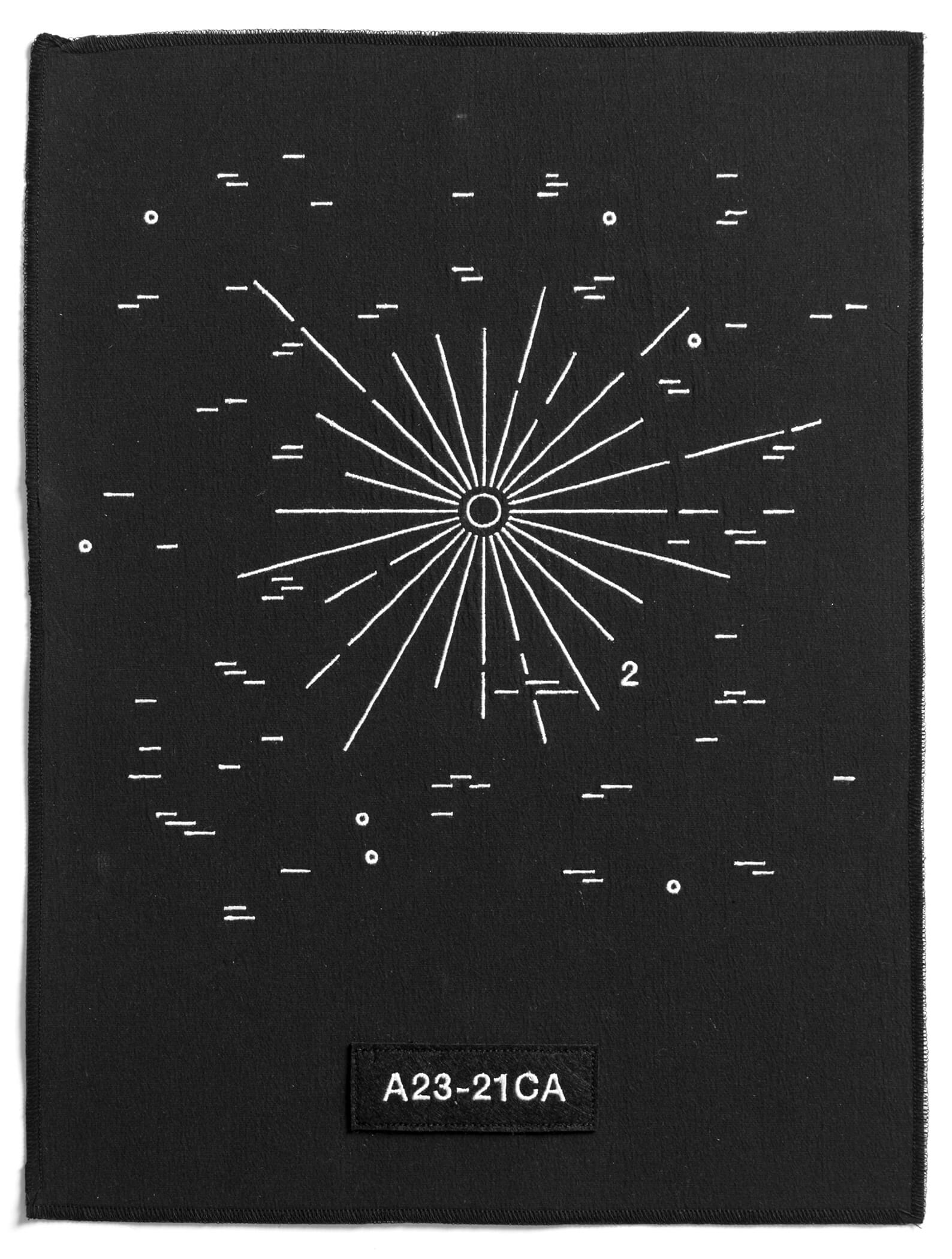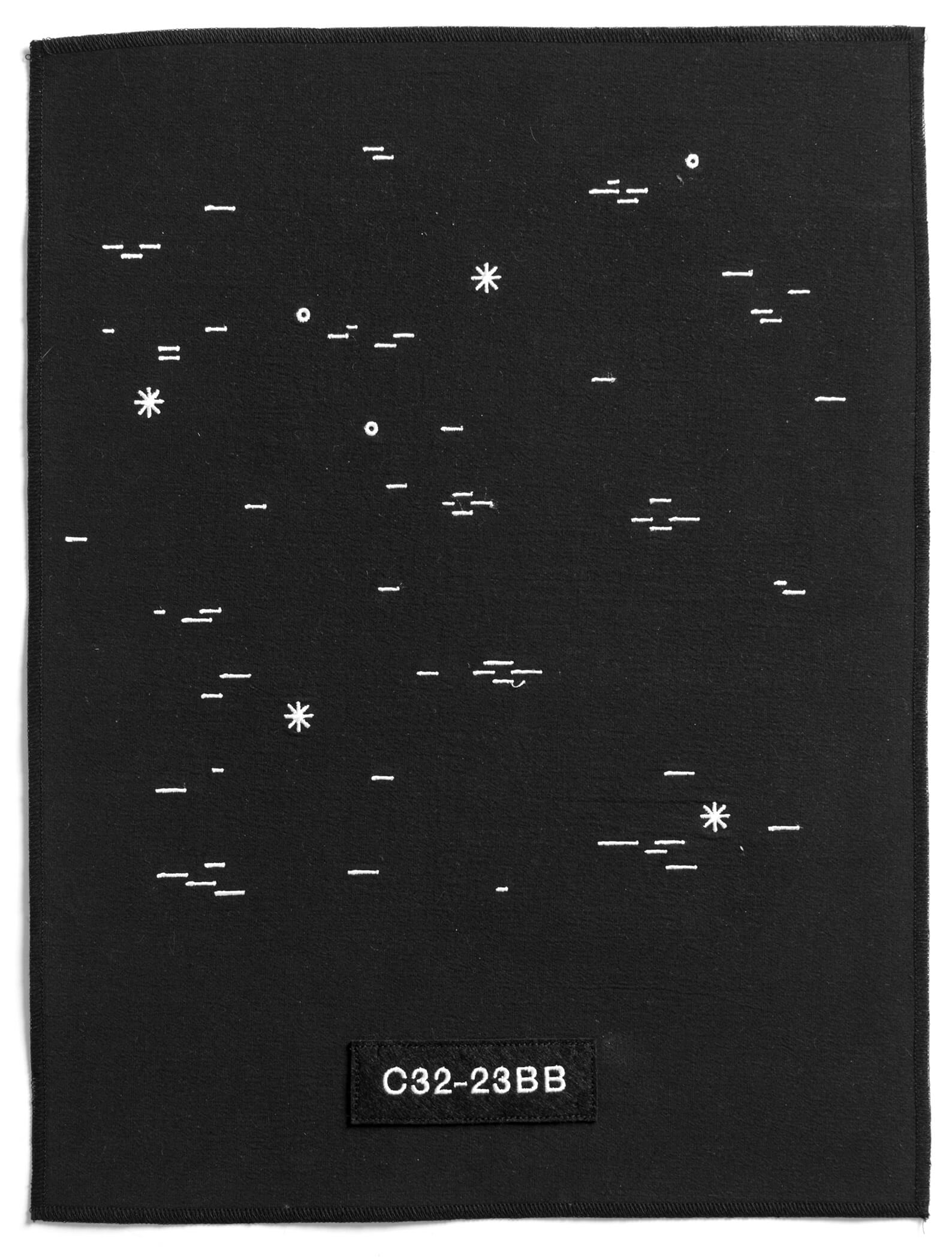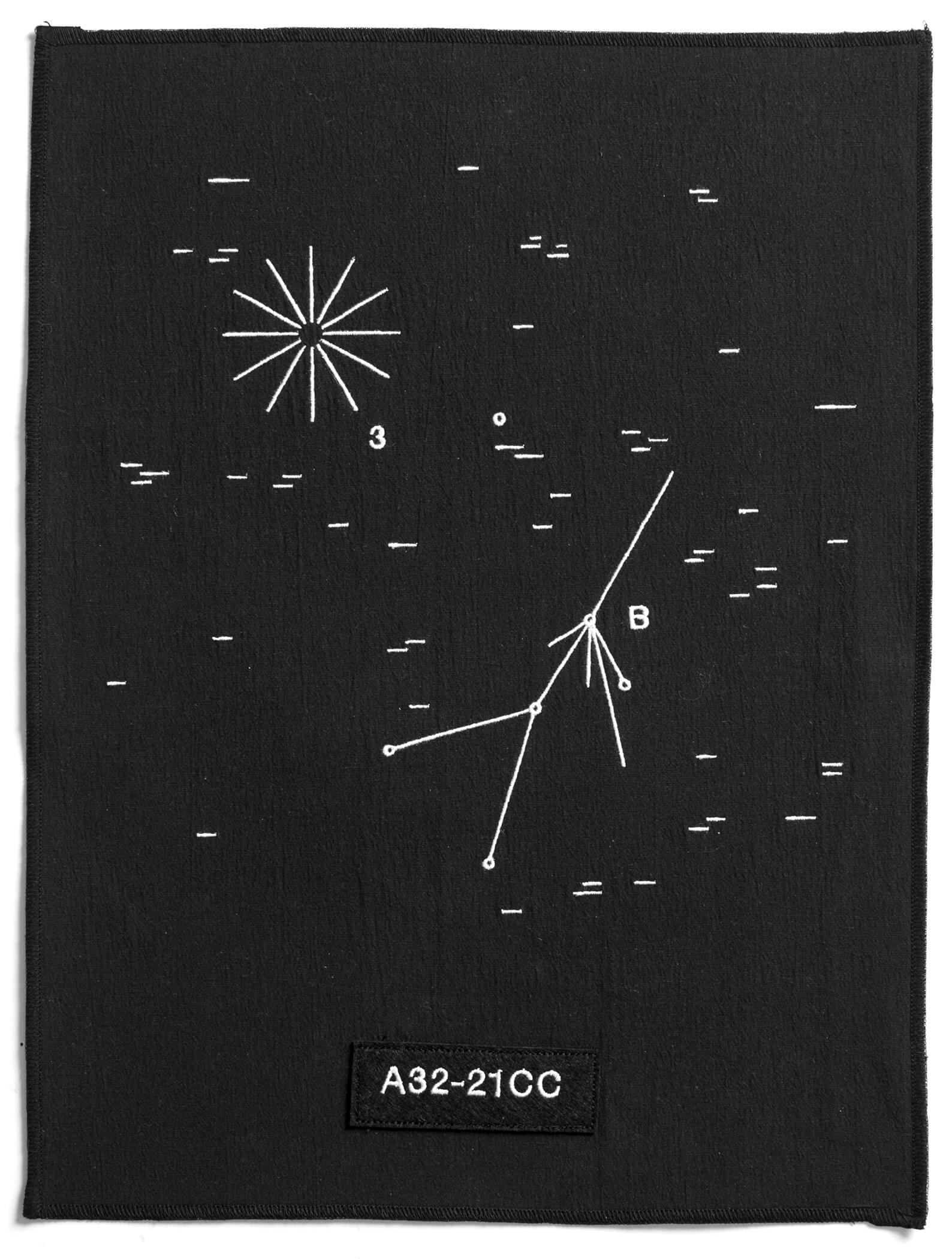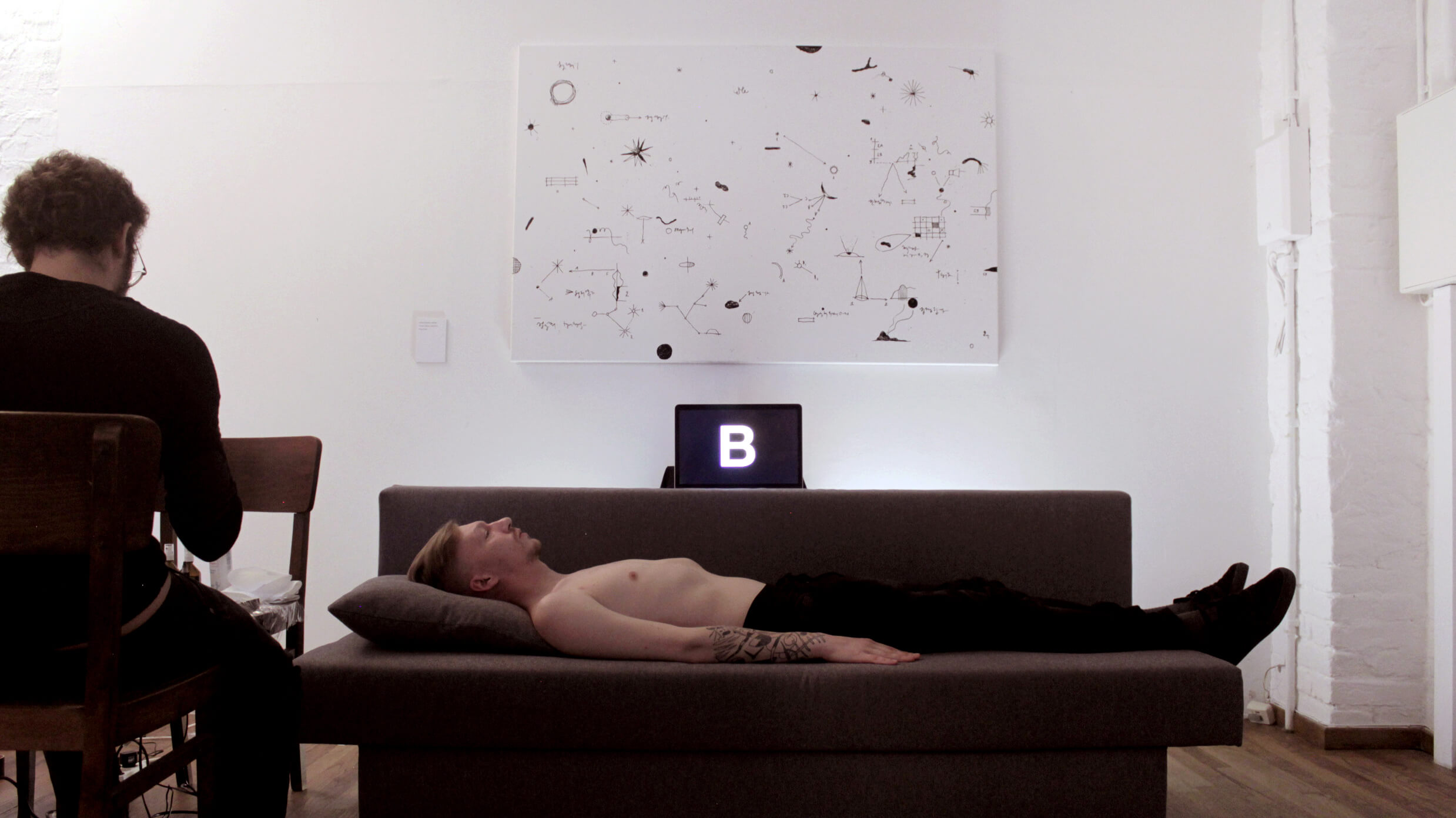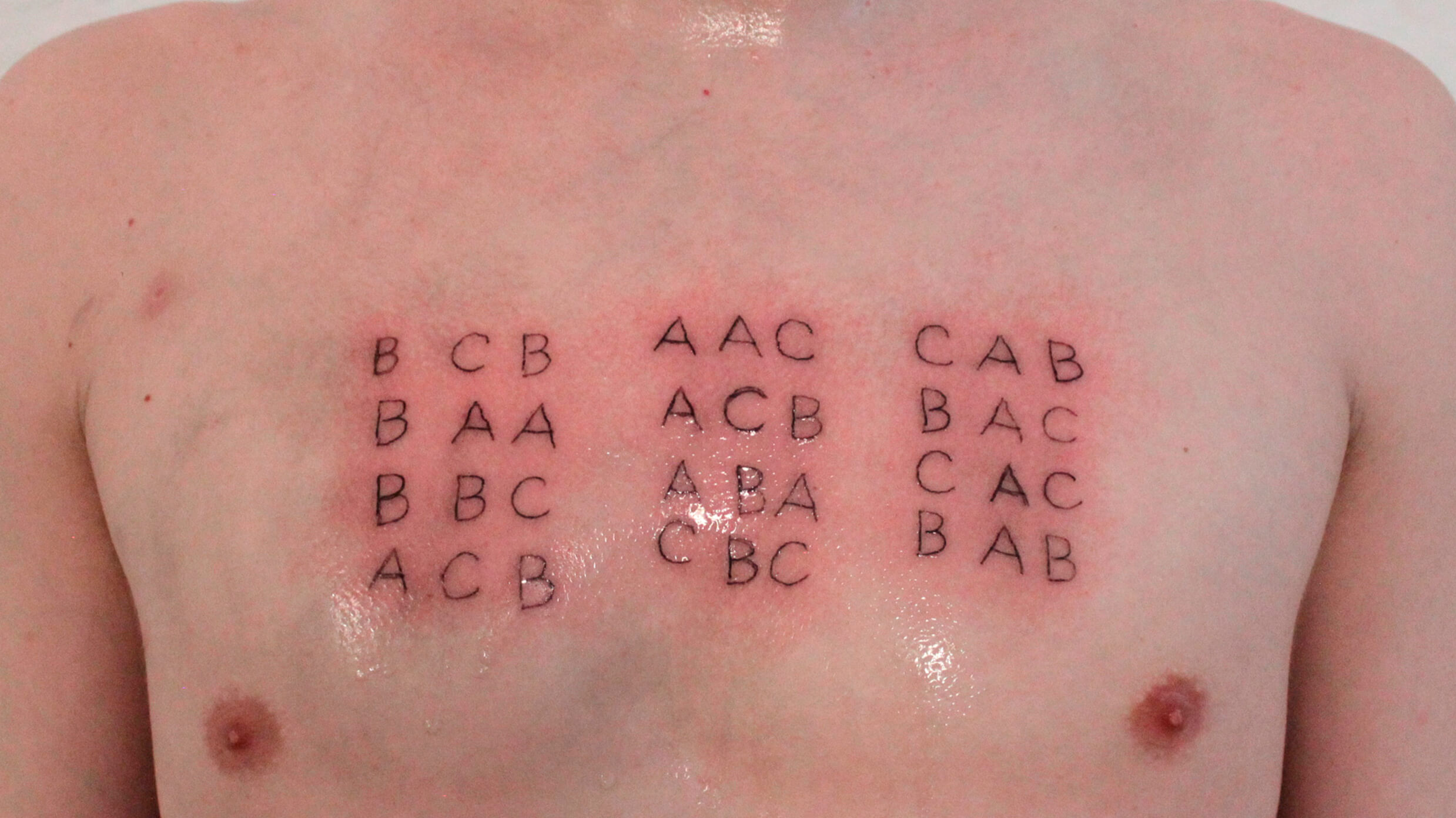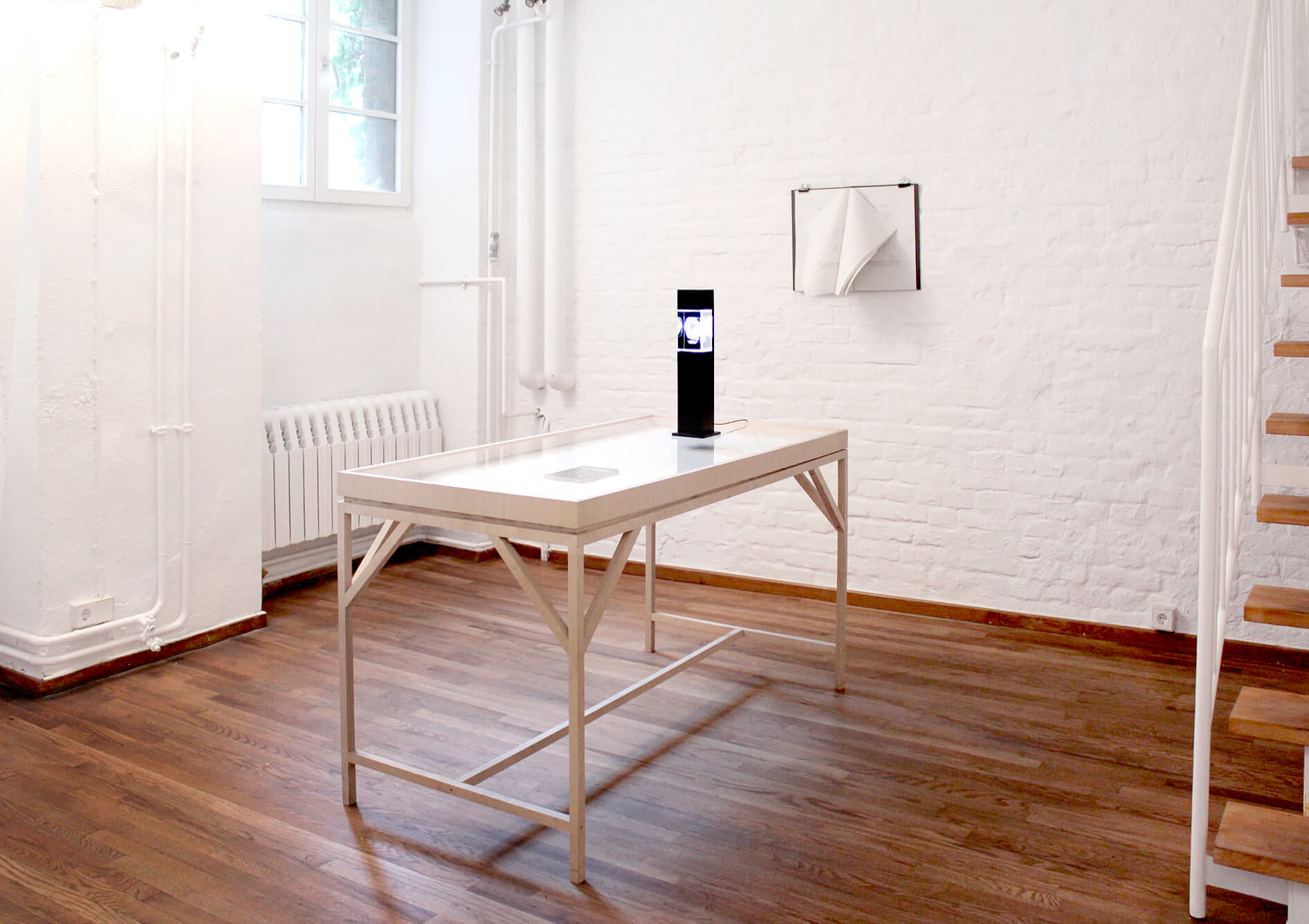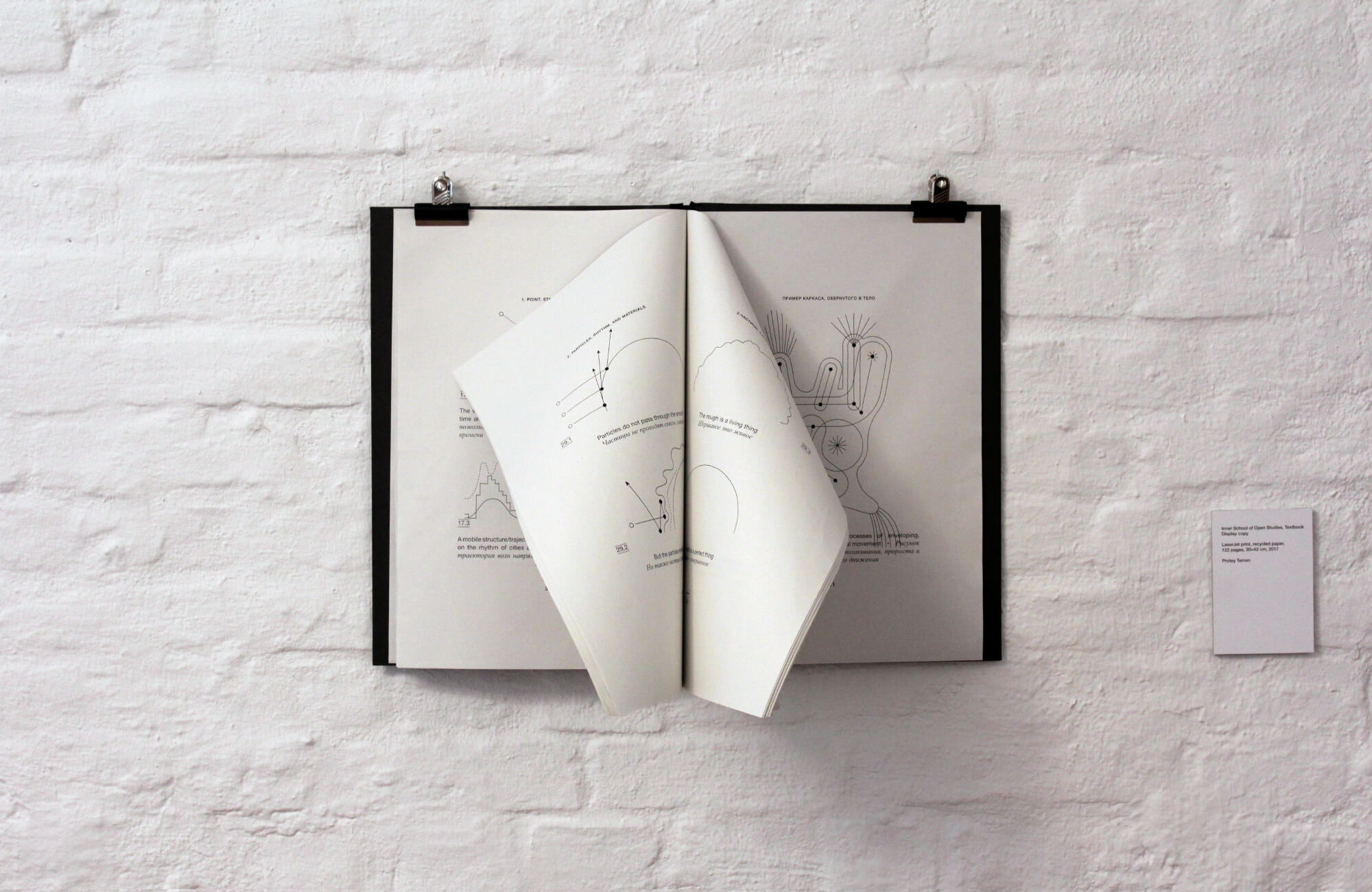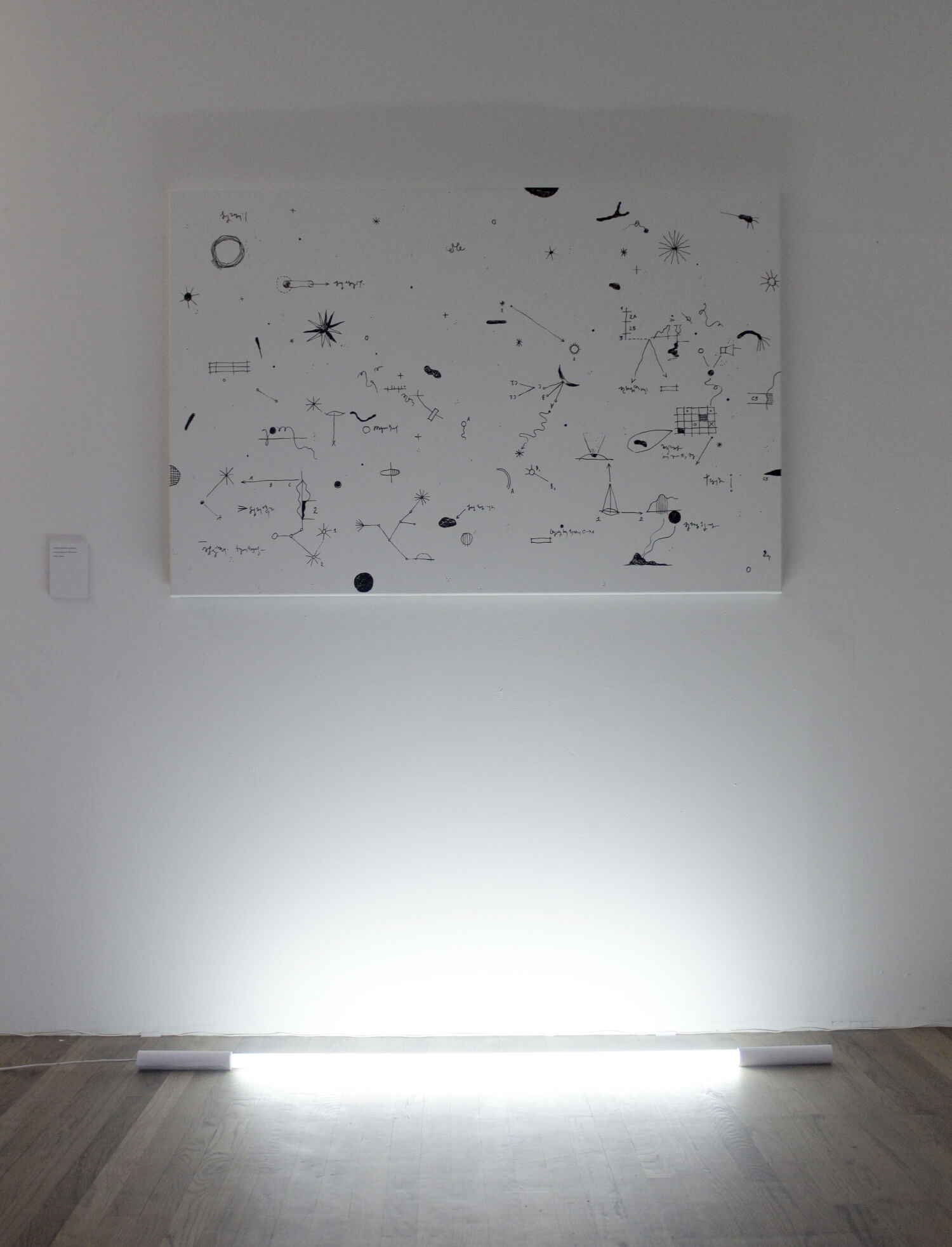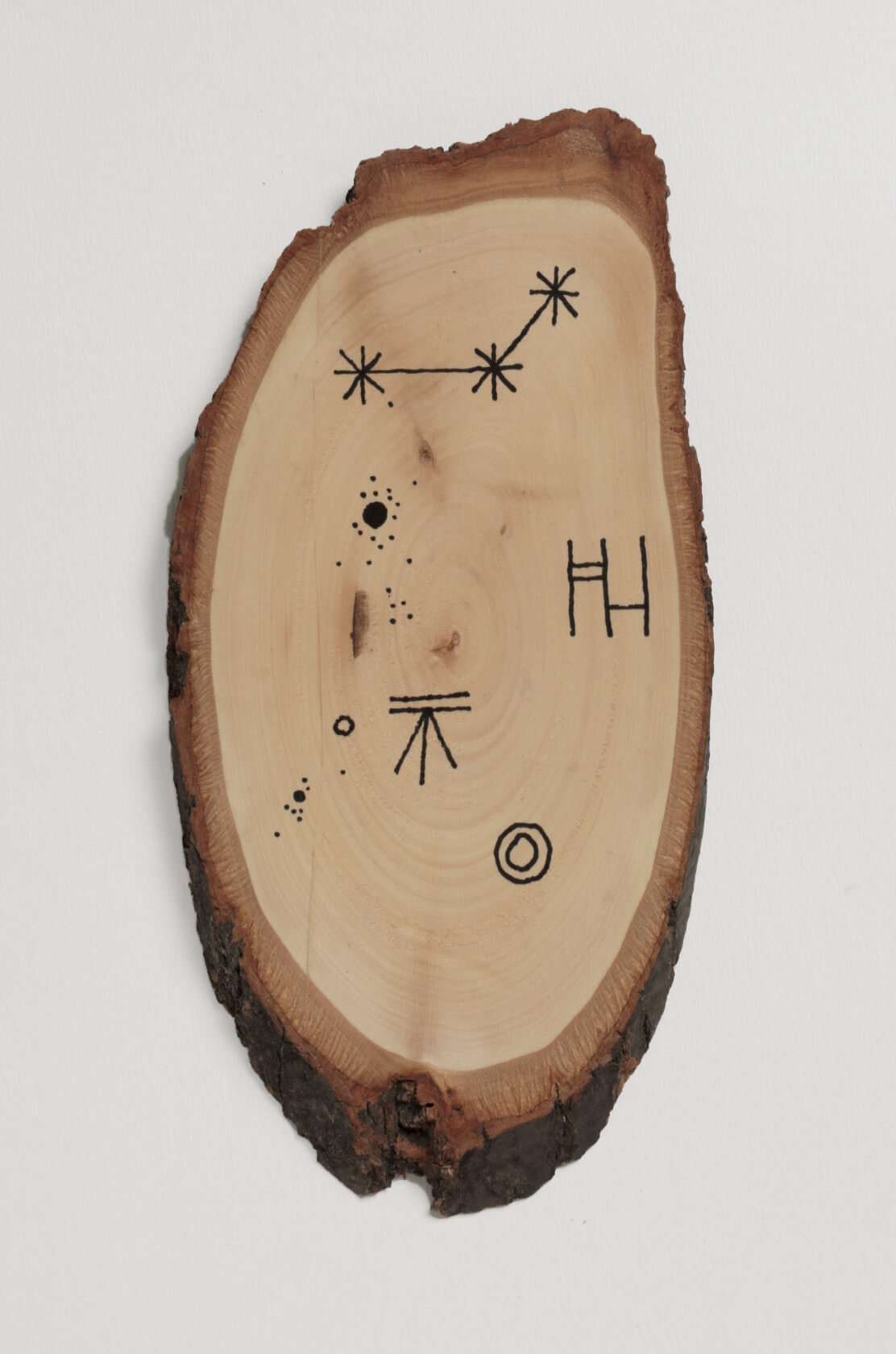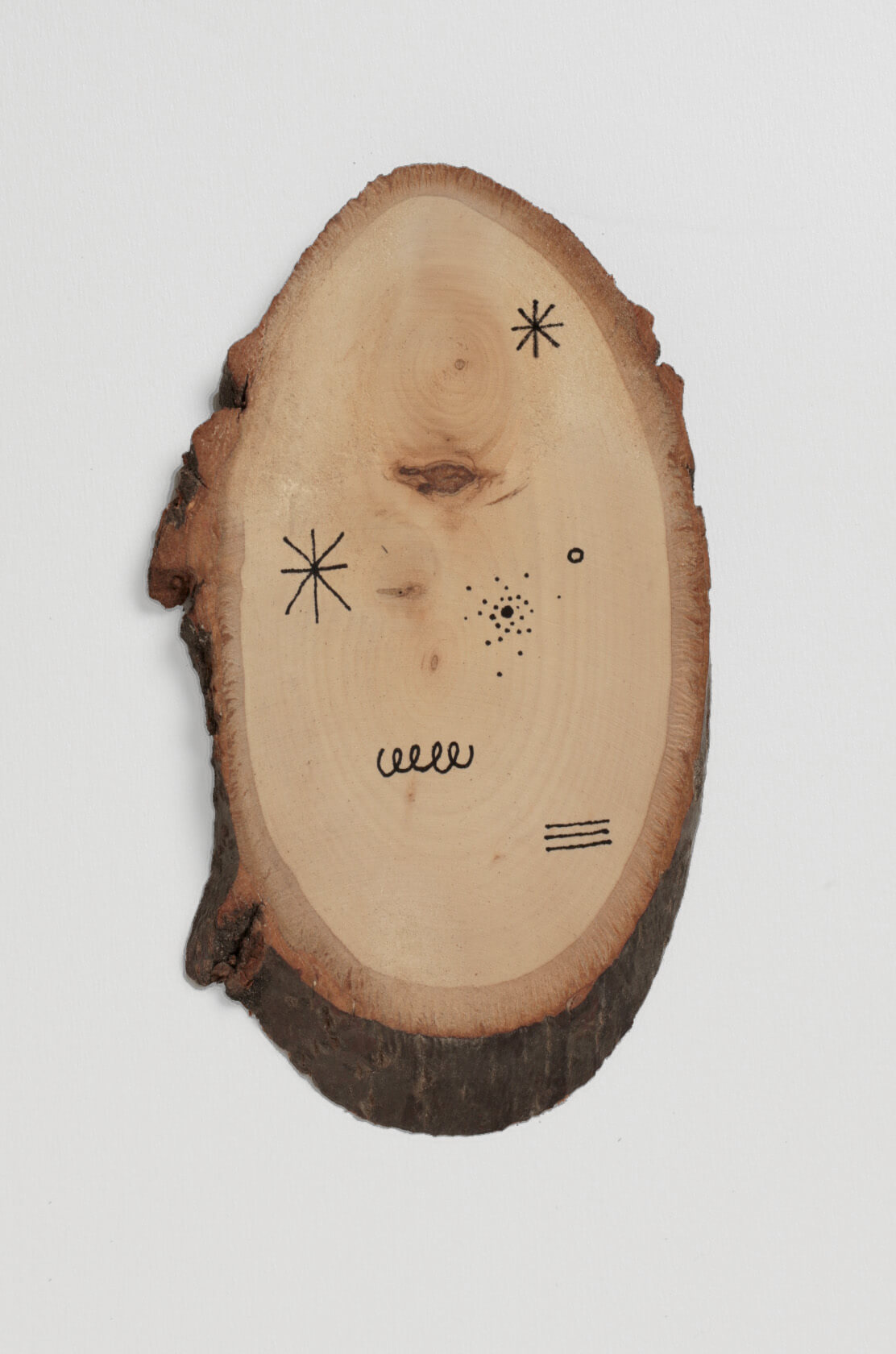The moment of the infinite expansion of the Universe because of “Big Bang” is no more an enigma for the modern science.
One of results of this event became unwinding of the vacuum filled with particles which possibly are the primal and principal matter. Just imagine: tiniest particles flying around absolutely sporadically, but sometimes they got arranged into the nature, subjects and even human beings.
A site-specific installation is capturing the moment of endless and hopeless approaches to get the breakthrough within “We all made of dust” conceptual research of a modern day scientist. For three days the private space was transformed into a pop-up laboratory for observing, exploring and documenting the dust particles. Through opening hours a monologue on particle-related concepts and reading of a book about “The Dust” were presented to every visitor.
“The event took place in a private house room which also turned out to be a lunatic scientist laboratory. A person in the room is mumbling words, having a lots of coffee and sometimes freezes like he has understood everything. But he is has not. Everything is a pointless. Visitors of the room could interact with the artist and sometimes he gladly tries to explain his science approach pointing out to the books and papers heavily covered with abstract schemes and handwritten scratches.”
Для современной науки не представляет никакой загадки момент бесконечного расширения вселенной в следствии большого взрыва.
Одним из результатов этого события стало разворачивание наполненной частицами пустоты, которые, возможно и являются первичной и основной материей. Просто представьте: мельчайшие частицы, летающие без всякого порядка, но иногда они организуются в природу, предметы и даже людей.
Сайт-специфик инсталляция, фиксирующая момент бесконечных и безнадежных подходов к достижению прорыва в исследовании концепции «Мы все сделаны из пыли» в поле современной науки. В течение трех дней частное пространство было преобразовано в поп-ап лабораторию для наблюдения, исследования и документирования частиц пыли. На протяжении работы проекта каждому посетителю был представлен монолог по вопросам, связанным с частицами, и чтение книги о «Пыли».
Выставка прошла в частном доме, который превратился в лабораторию сумасшедшего ученого. Человек в комнате бормочет слова, пьет много кофе и иногда застывает на месте, как будто он все понимает. Но это не так. Все не имеет смысла. Посетители комнаты могли взаимодействовать с художником, а он пытался объяснить свой научный подход, демонстрируя на книги и документы, сильно покрытые абстрактными схемами и рукописными царапинами.
